Learning & Teaching
Learning and Teaching encompasses the following areas: Student Outcomes, Curriculum, Assessment, Reporting, Principles and Pedagogy.
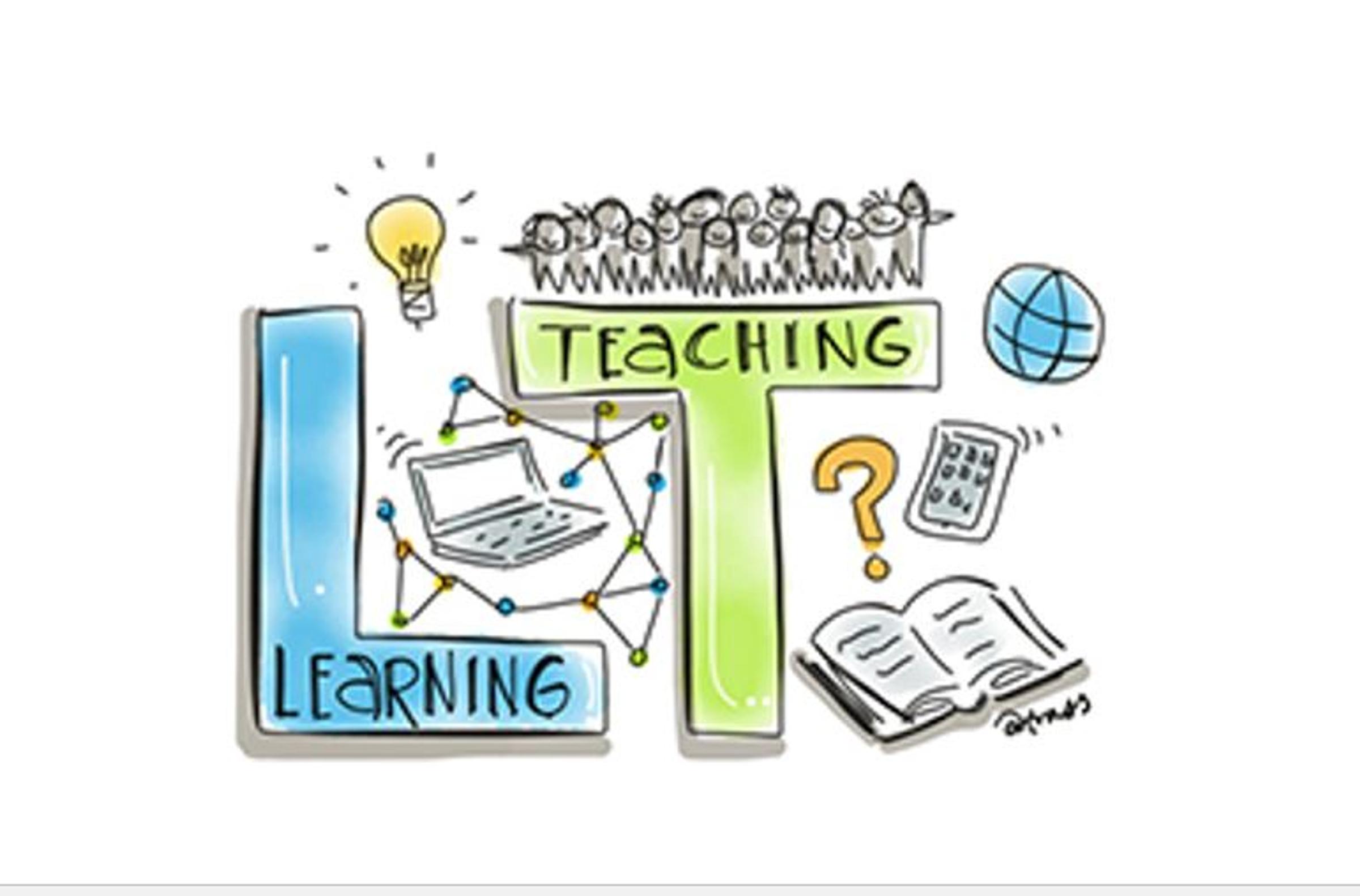
Learning & Teaching
Learning and Teaching encompasses the following areas: Student Outcomes, Curriculum, Assessment, Reporting, Principles and Pedagogy.
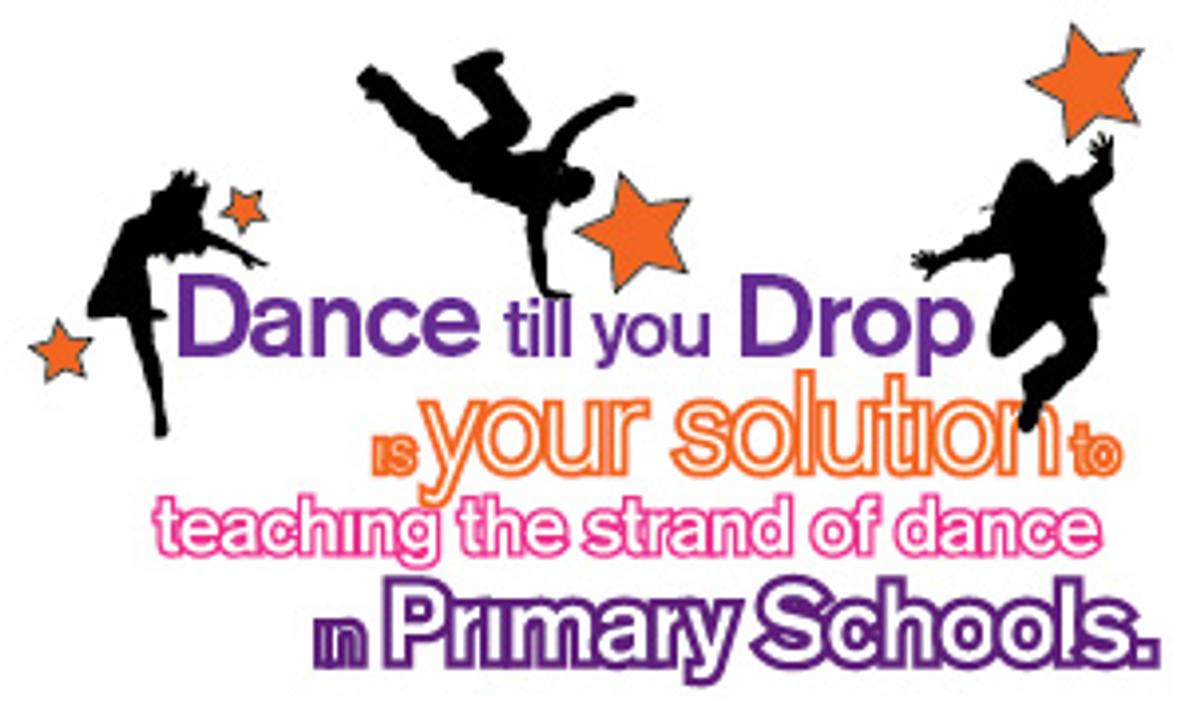

Exciting News:
Dance Program Kicks Off in Term 2!
We are thrilled to announce that our highly anticipated dance program will commence in Week 2 of Term 2! This year, the program is beautifully aligned with our Inquiry Unit's big concept of cultural diversity, providing students with a fantastic opportunity to explore the richness of cultures from around the world through dance.
Every Monday, the fantastic team at Dance Til You Drop will deliver a structured 10-week program that offers an engaging and interactive way for students to develop key skills in movement and coordination. They will learn various dance styles from different cultures while building on the fundamentals of dance, such as rhythm, timing, and spatial awareness. This dance program will end with a Whole School Concert on Thursday August 7th - more details soon.
This program will enhance students' physical skills and deepen their understanding and appreciation of cultural diversity. It's one of the year's highlights and a fantastic way for our students to celebrate movement, creativity, and global cultures! Stay tuned for more updates as we dance our way into Term 2!
Parent Helpers – Join Us in Supporting Our Students!


As the school year progresses, we’re excited to welcome parents into our learning spaces. When parents engage in school life, it fosters better academic performance, improved attendance, increased motivation, and stronger relationships between school and home.
Becoming a parent helper offers you the chance to actively participate in your child’s education, build connections with teachers and other parents, and make a meaningful impact on our school community.
Parent helpers are an essential part of our school. They assist with various tasks, including:
Your time is valuable, and we sincerely appreciate any help you can provide, whether an hour a week or a few hours a month - every bit makes a difference!
Child Safety Induction
To ensure the safety and well-being of all students, it is a requirement that all parent helpers complete a Child Safety Induction before assisting in our learning spaces. This induction covers important information about maintaining a safe and supportive environment for all children and is essential to our commitment to child safety.
As part of our commitment to Child Safety, all volunteers must have a current Working with Children Check and complete a child safety volunteer Code of Conduct form available at the school office.
Teachers will contact parents with schedules and timetables during Week 1 of Term 2.
This child safety induction will be on April 29th in Term Two; however, you are not required to complete the induction if you have previously participated in a session. An invite will be sent to parents next week.
If you have any questions or need further information, please contact me at vpirrotta@sfmoreland.catholic.edu.au.
We look forward to working with you to create a vibrant, supportive school community for our students!
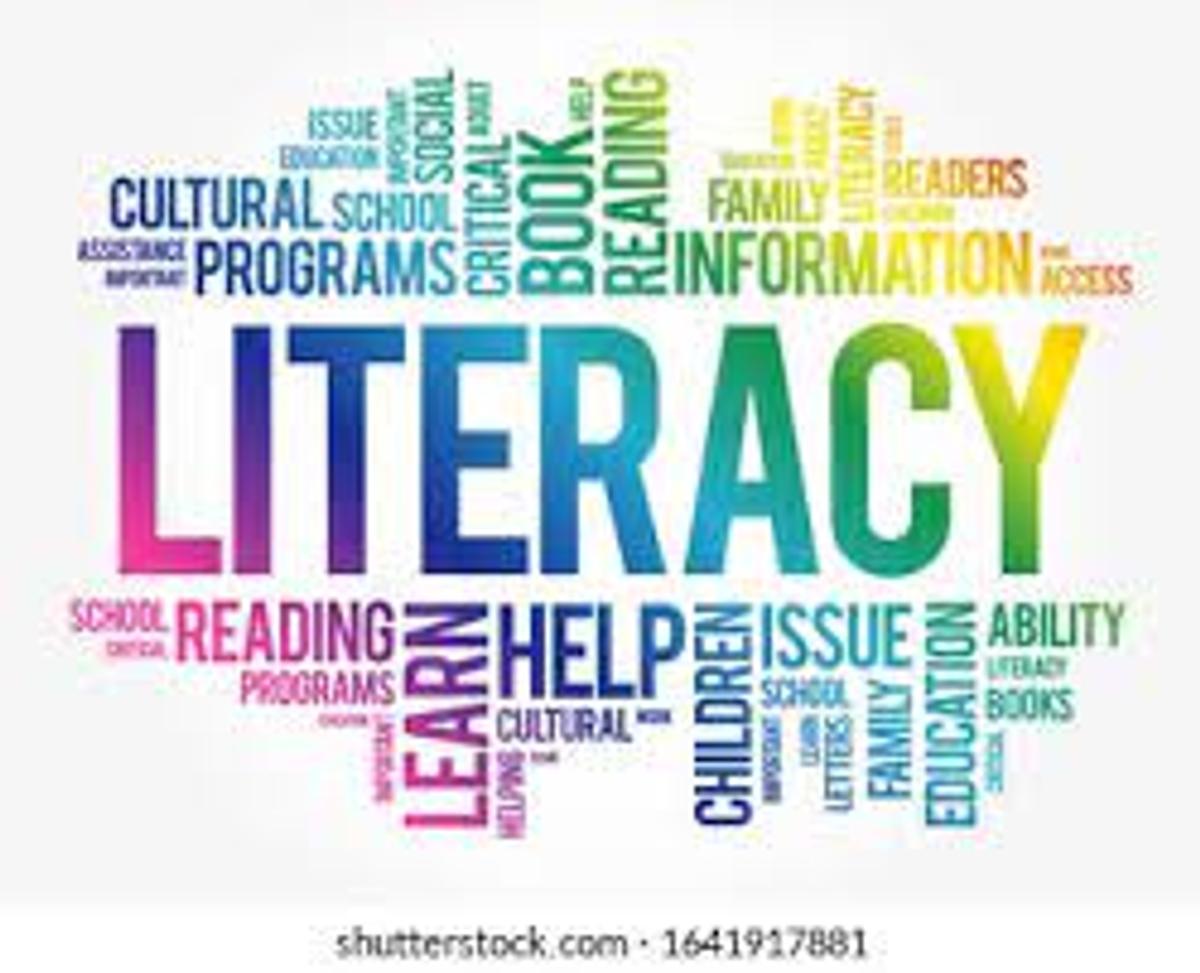

What’s been happening in Literacy at St Fidelis
We were thrilled to welcome Michelle Hutchinson, the developer of the SMART Spelling approach, to our school on Tuesday morning. The students were excited to meet her in person, having previously only seen her through recordings. During her visit, Michelle worked with students across Years 1 to 6, teaching a selection of words, engaging in conversations with the students, and joining the teachers for morning tea to answer any questions.
Michelle was highly impressed with the students' knowledge and the teachers' implementation of the approach in such a short time. It was a pleasure to have Michelle return and witness the growth and implementation.
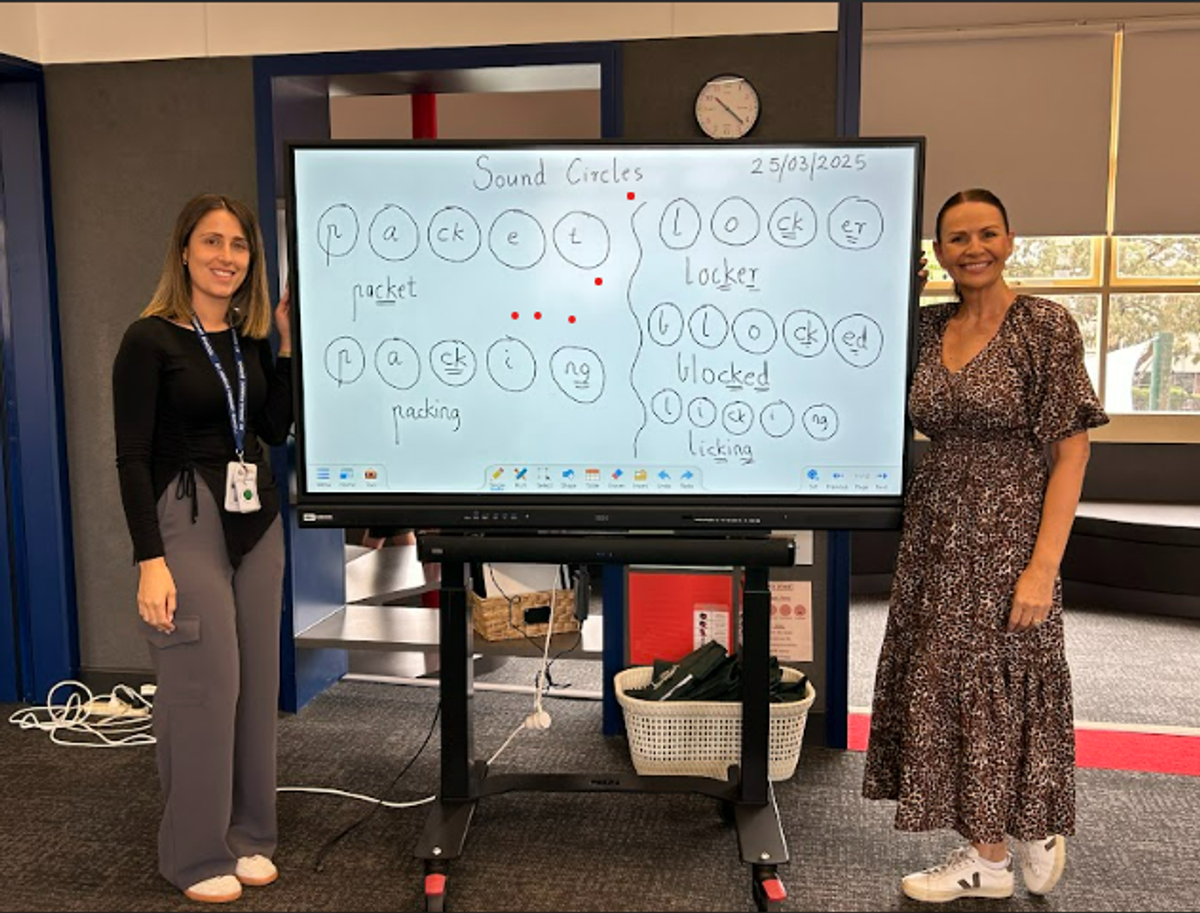
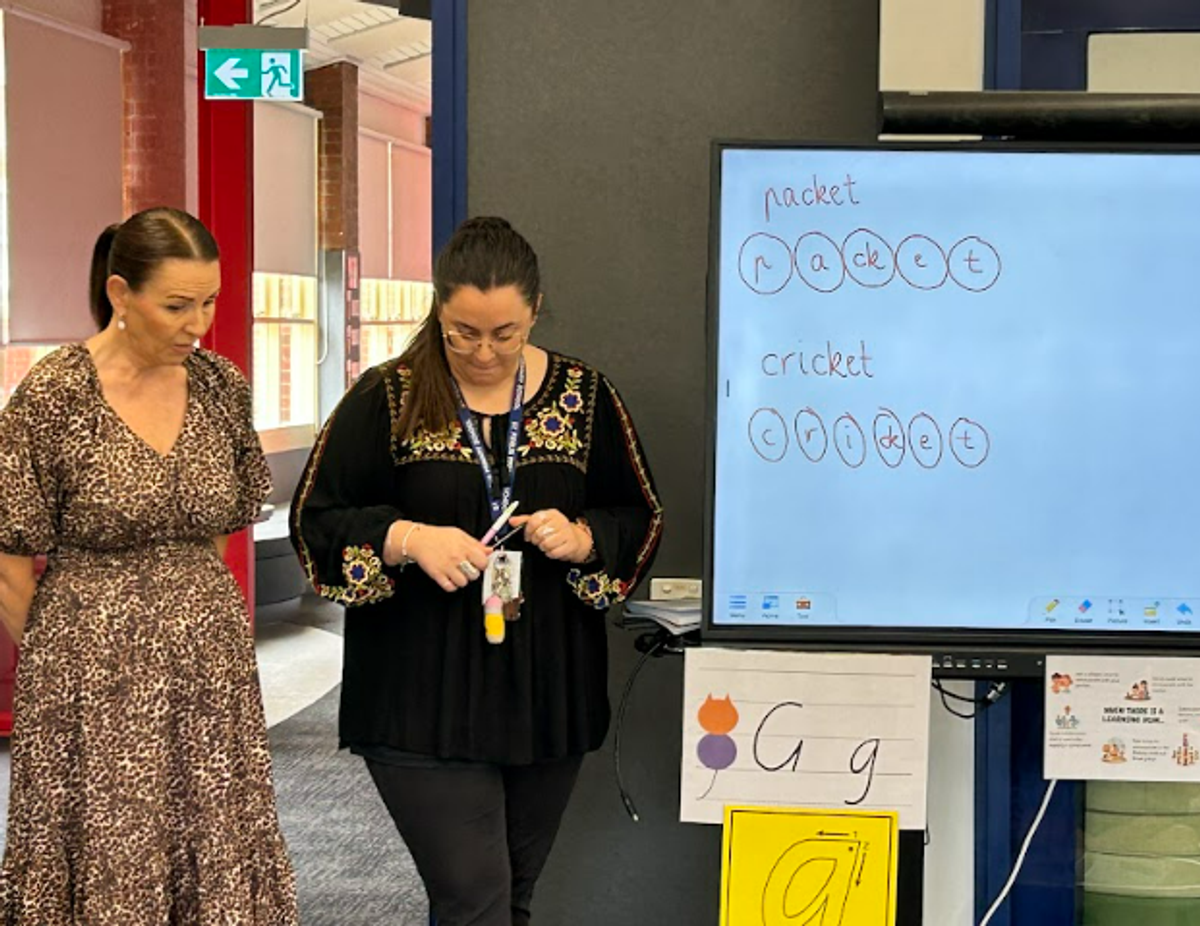
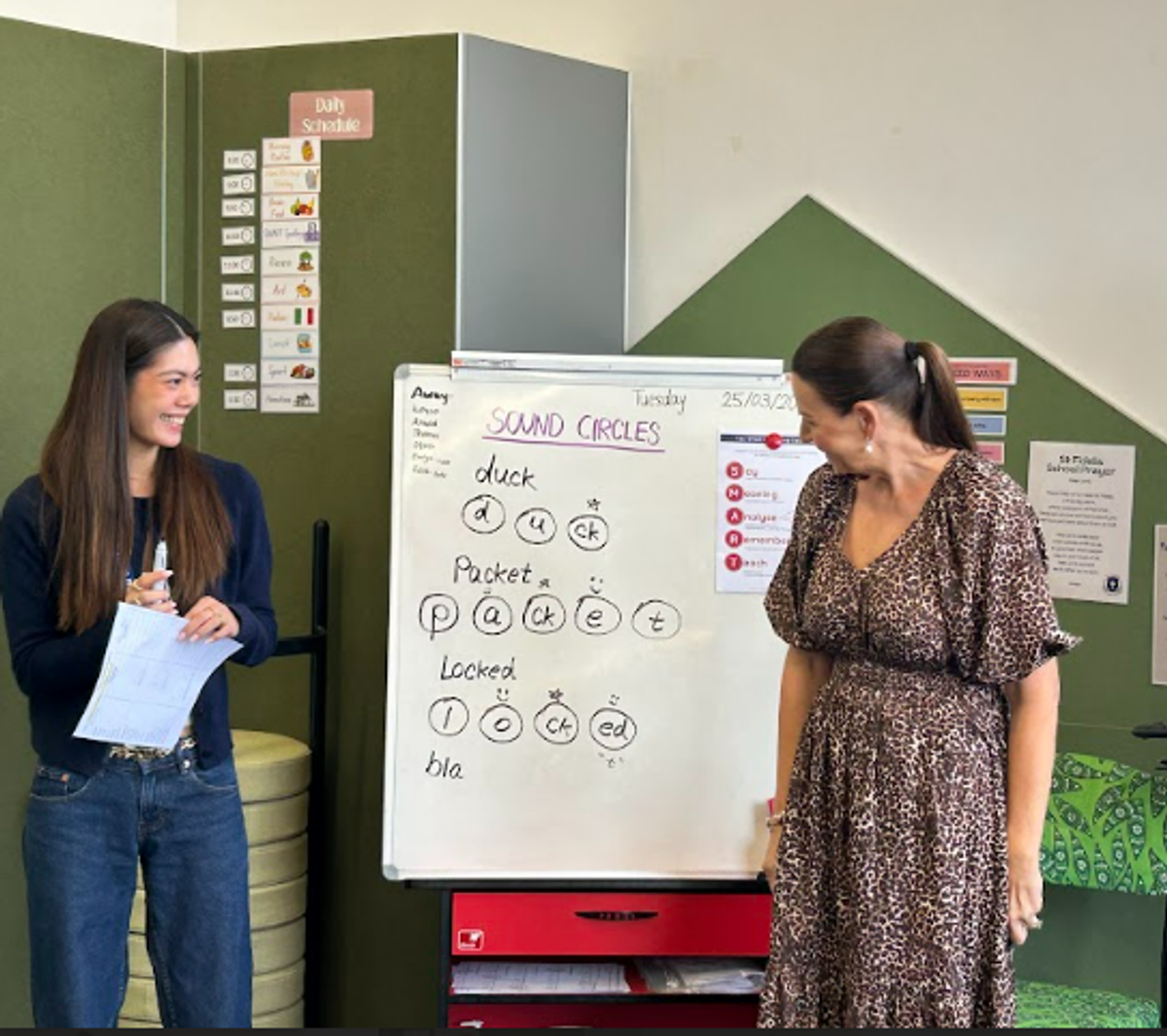
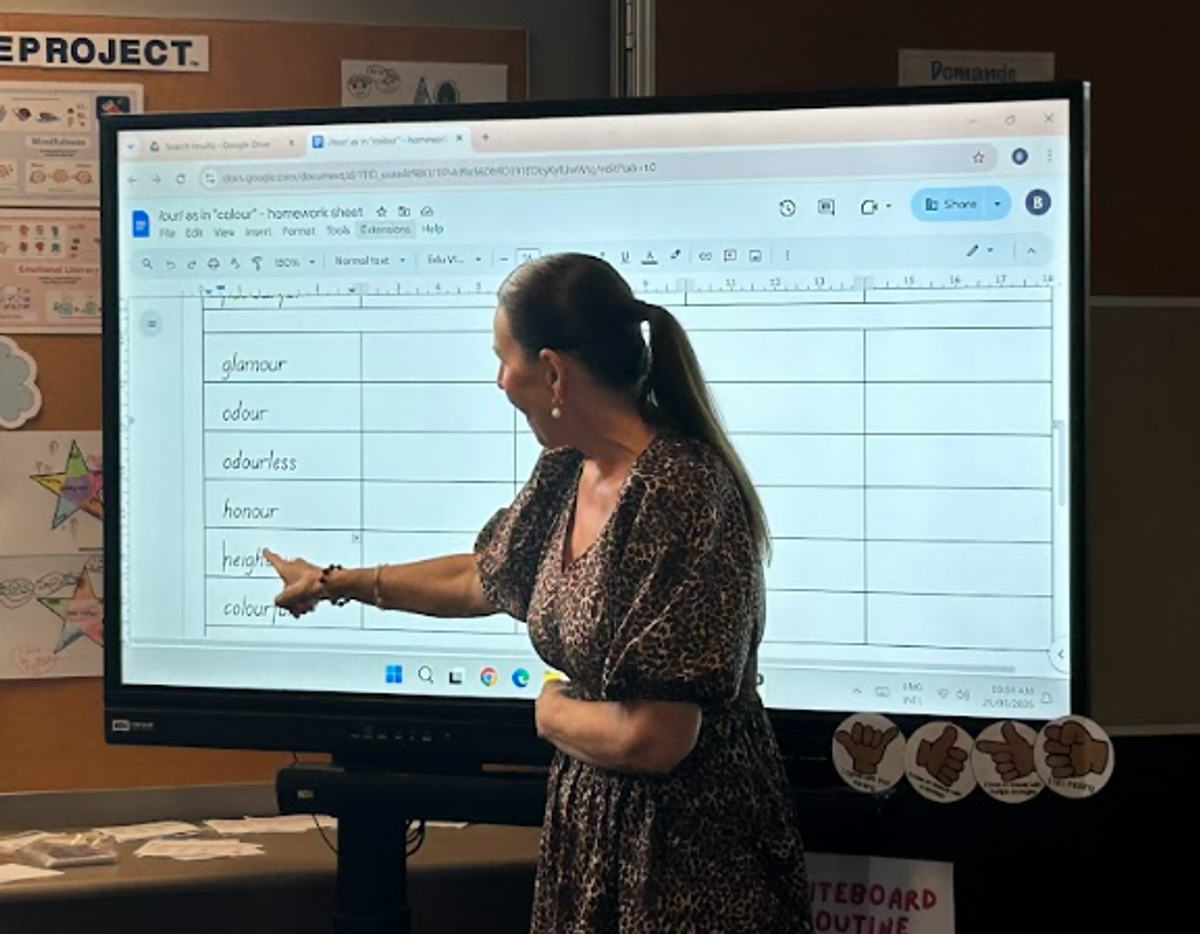






Summing up Term 1 through the eyes of literacy
Foundation
In the Foundation year, students have made great strides in their literacy journey. They have started recording known letters and sounds to form their own sentences, building the foundation for their writing skills. Alongside this, they are learning important writing conventions, such as leaving spaces between words, starting sentences with a capital letter, and ending them with a full stop. Their focus also extends to developing letter formation, segmenting and blending sounds in reading, and identifying syllables, all of which are essential skills in their literacy development.
Year 1 and 2
Students in Years 1 and 2 have been working hard on writing recounts, learning about the purpose of this text type, how to follow the structure and incorporate key language features. They’ve been adding adjectives to make their writing more descriptive and practising the use of past tense to ensure consistency. Focus has also been placed on sentence structure, helping students to create clear and coherent sentences that convey their ideas effectively.
Years 3, 4, 5, and 6
This term, students in Years 3, 4, 5, and 6 have been focusing on enhancing their writing skills through the creation of both narratives and persuasive texts. In narrative writing, they’ve been exploring how to develop engaging characters, settings, and plots, while also learning how to structure their stories with a clear beginning, middle, and end. In persuasive writing, students have been practising how to effectively present and support their opinions, using strong arguments and appropriate language features to convince their audience. Throughout both genres, the emphasis has been on improving coherence, creativity, and attention to detail.
In addition students have been enjoying reading class novels this term.
Year 3/4 Reading: Matilda by Roald Dahl
The Year 3/4 students are currently enjoying Matilda by Roald Dahl, a classic story about a young girl who faces difficult parents but discovers she has an extraordinary power,the ability to move objects with her mind. As Matilda learns to control this incredible gift, she uses it for good, often with a touch of mischief!
In literacy lessons, students have been focusing on two key strategies: summarising and creating open-minded portraits of characters.
Summarising involves condensing the most important points of a text into your own words, making it much shorter. This strategy helps students identify the core ideas, filter out unnecessary details, and combine key points effectively. Not only does summarising aid in comprehension, but it also enhances memory retention.
Creating an open-minded portrait of a character is another valuable activity that deepens students' understanding. By looking beyond the surface, students are encouraged to explore the motivations, emotions, and traits of a character in a more thoughtful way. This exercise helps them think critically and empathetically, enriching their connection to the story. For example, students created open-minded portraits of the character Matilda, reflecting on what drives her actions and how she overcomes challenges.
I am excited to share some of the fantastic work produced by the students in 3/4BP. Well done, everyone! (Thank you for allowing me to share this great work Mrs Panzarino.)

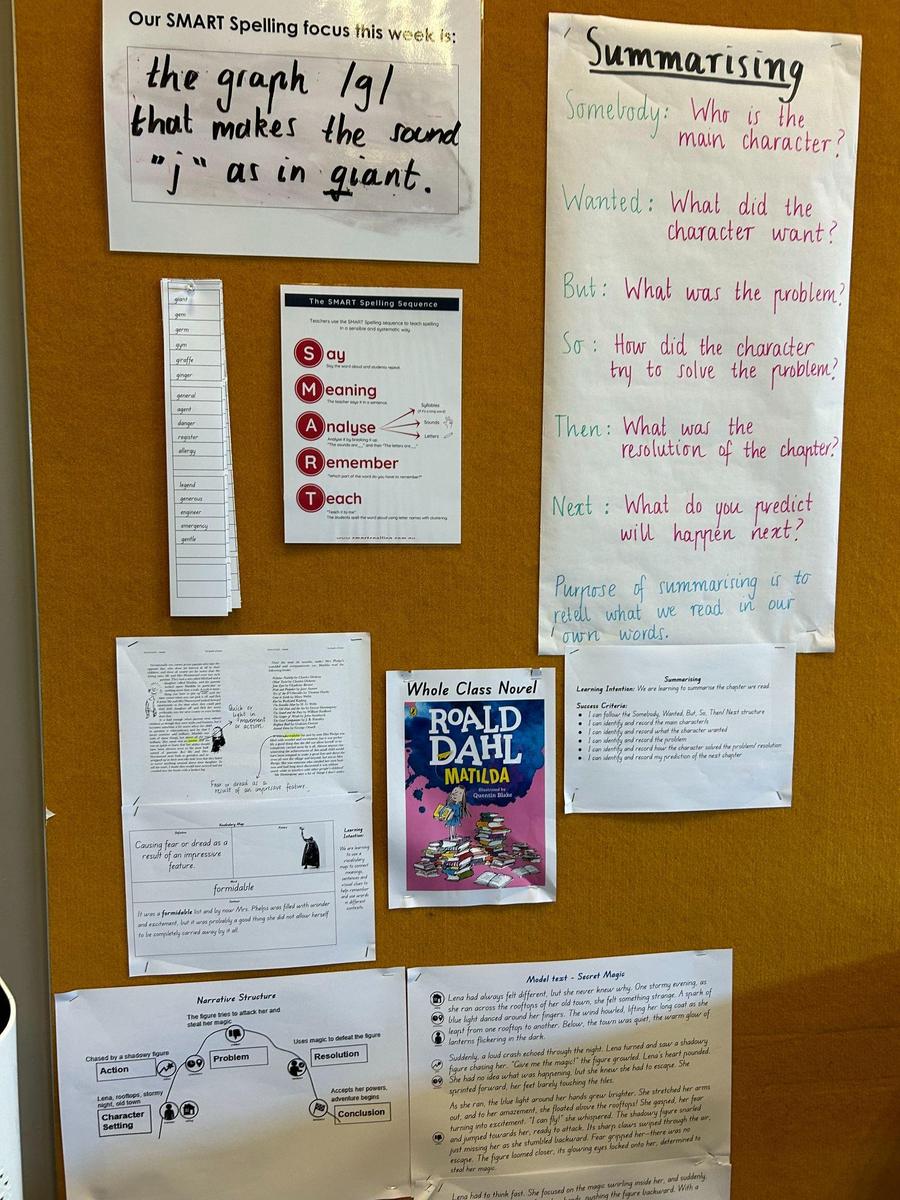


Year 5/6:
The Year 5/6 students recently finished reading A Ghost in My Suitcase, and have now started The Silver Donkey by Sonya Hartnett. These two books are quite different from each other!
The 5/6 students have been using the summarising strategy while reading A Ghost in My Suitcase. To further support comprehension in The Silver Donkey, we will focus on the strategy of making connections.
Making connections is a reading comprehension strategy that helps students link the text to their own background knowledge (or schema). This strategy encourages engagement with the text and promotes a deeper understanding.
Reading and Writing during the holidays
School holidays are a great time to relax and have fun, but they can also lead to children losing touch with some of the skills they've gained during the term. To help keep those skills sharp, encourage your children to read and write for the joy of it.
A creative way to get your children writing is to provide them with a purpose. For example, have your child write a letter to a friend or family member, seal it in an envelope, and take a walk to the nearest postbox.
The holidays are the perfect time to visit your local library and borrow books for some enjoyable reading at home. Many libraries offer a variety of engaging activities and events, during the breaks making it a great opportunity to explore the library’s collection and take part in free events.
And a reminder: St Fidelis' School has a subscription to Sunshine Online. With over 900 e-books and more than 2,000 activities, Sunshine Online offers engaging, educational resources. There are also 82 interactive e-books to help children learn letter-sound relationships, supporting them in decoding unfamiliar words.
https://library.sunshineonline.com.au/login/student log in stfidelis password read123
Some other suggestions that you could explore during the holidays
Scholastic’s National Family Reading Month


NATIONAL FAMILY READING MONTH is an initiative that represents the heart of our business— literacy being the key to learning and achievement. We believe that all children, with the help of their families and reading role models, can benefit from a lifelong love of reading.
This year marks the 29th Scholastic’s National Family Reading Month (NFRM), which encourages families to read together on a regular basis to create strong reading habits. Most of us know how important reading together is and its long-term value to our children’s success in school and in life. However, we also know it is not always that easy to put into practice with our busy schedules and increasing competition with screen time.
That is why we ask you to take the 31-Day Challenge - to inspire you to make reading together for at least 10 minutes every day a focus, to create positive, long-lasting reading habits and lifelong readers!
NFRM will launch on, THURSDAY 1ST OF MAY 2025, AT 11 AM AEST where it will be livestreamed all across Australia and New Zealand via Facebook and YouTube. Mr Luke will read his book Guess What We Are Doing Today? together with illustrator Chris Kennett and kick off the 31-Day Challenge, as we READ EVERY DAY! READ MORE IN MAY!
You are invited to go to our website to download more assets and join the 31-Day Reading Challenge with us. Visit scholastic.com.au/nfrm for downloads, reading tips and exclusive content from Mr Luke.
Let’s encourage the 31-Day Reading Challenge and celebrate National Family Reading Month together!
It would be wonderful to have as many families as possible join us in celebrating National Family Reading Month. Please sign up using this link
https://scholastic.e-newsletter.com.au/NFRM2025
Wishing you all a joyful and peaceful Easter, and a well-deserved break filled with fun and relaxation.
Bernadette Parnis
Literacy Leader
bparnis@sfmoreland.catholic.edu.au
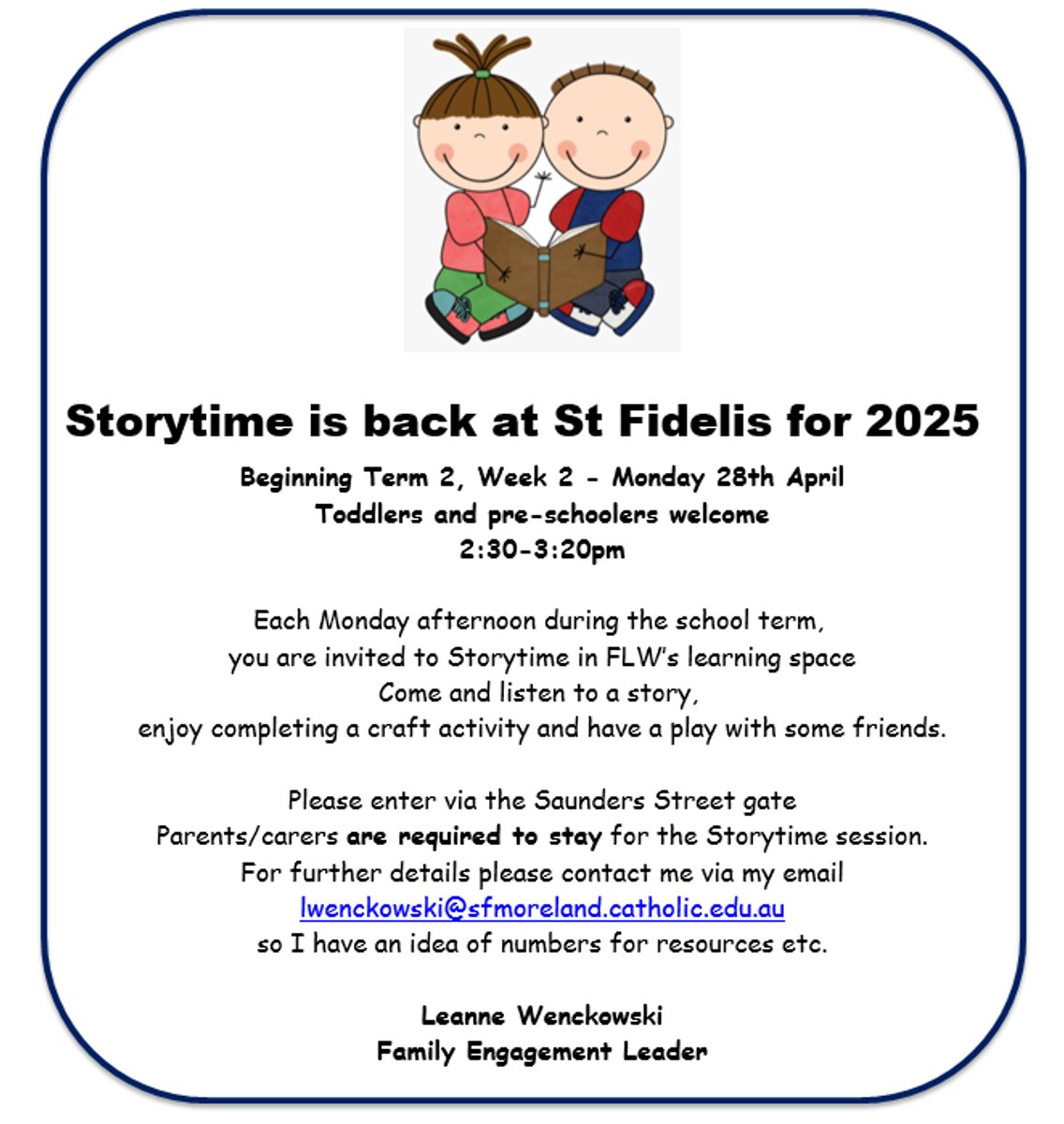

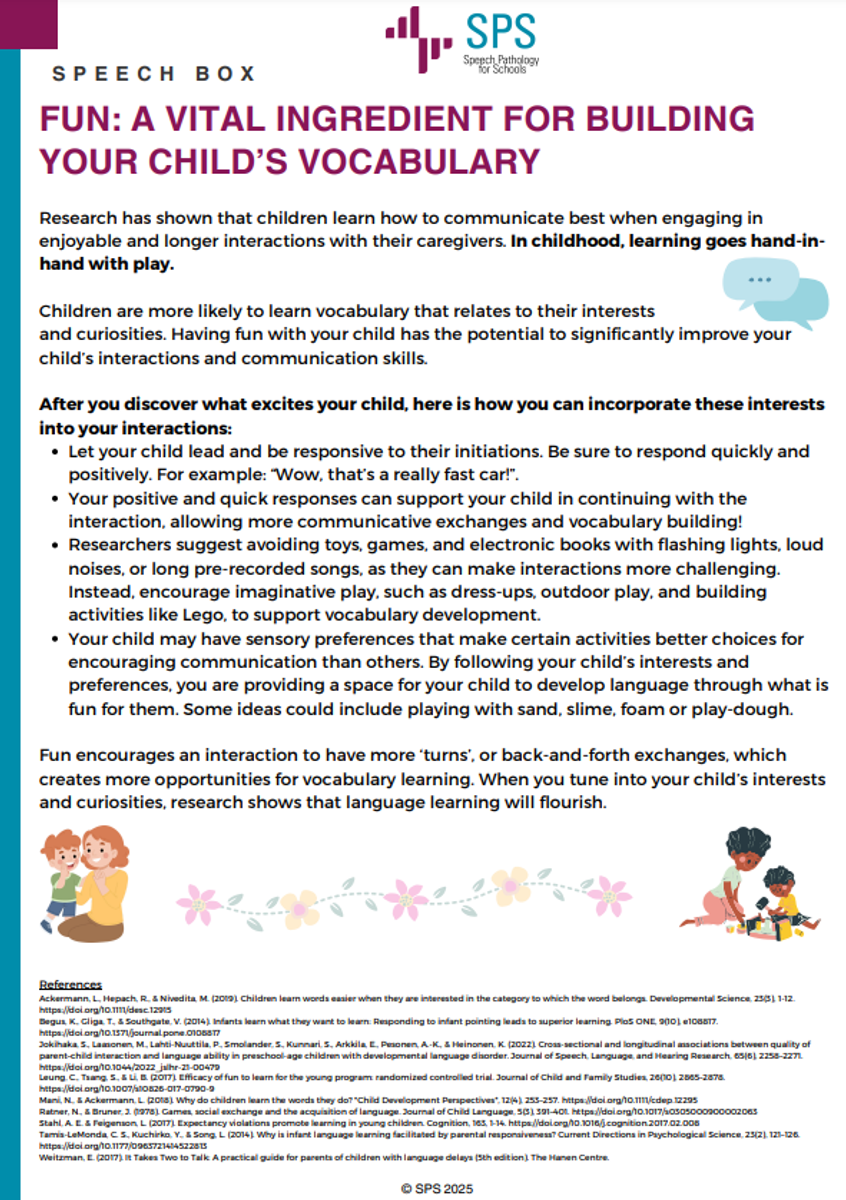

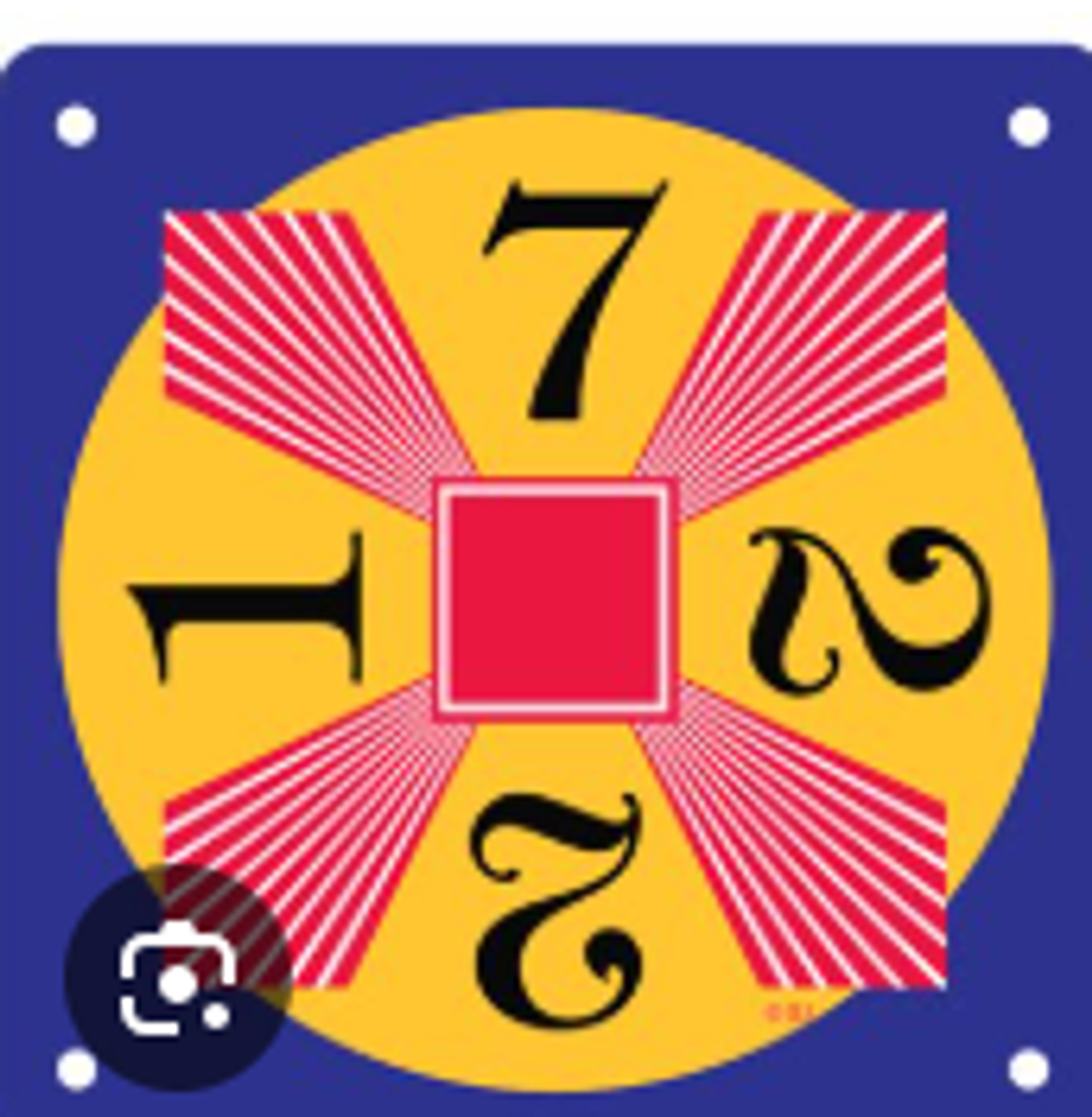

For those who love a challenge, can you use these 4 digits to make 24 ?
How to play: Make the number 24 using the 4 numbers on a game card. You can use any or all of the 4 operations, but use each number only once. There are more than one solution to each card.
I got the opportunity to work with a group of Foundation students this week. They loved recording backward counting patterns on the rolls of paper.

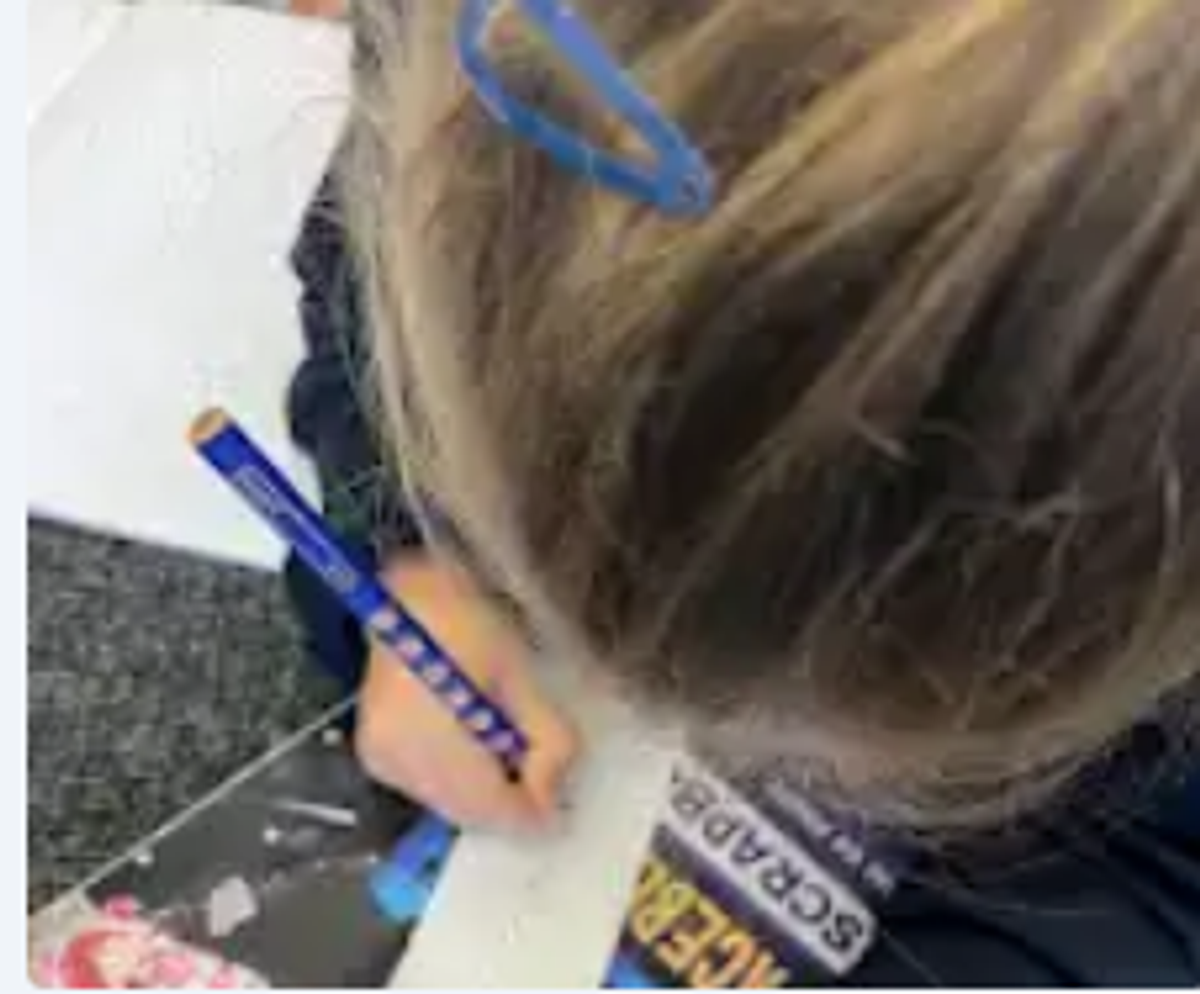
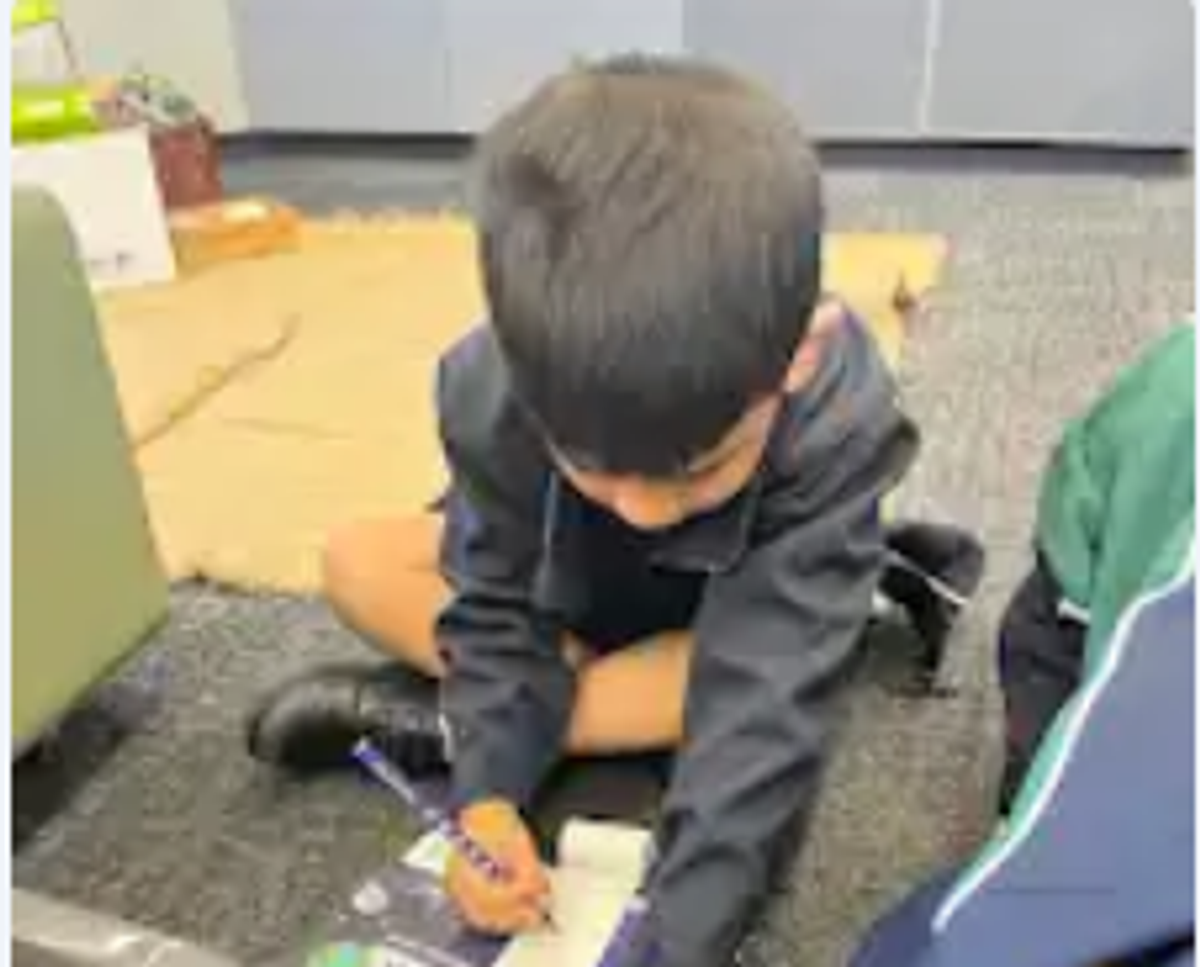
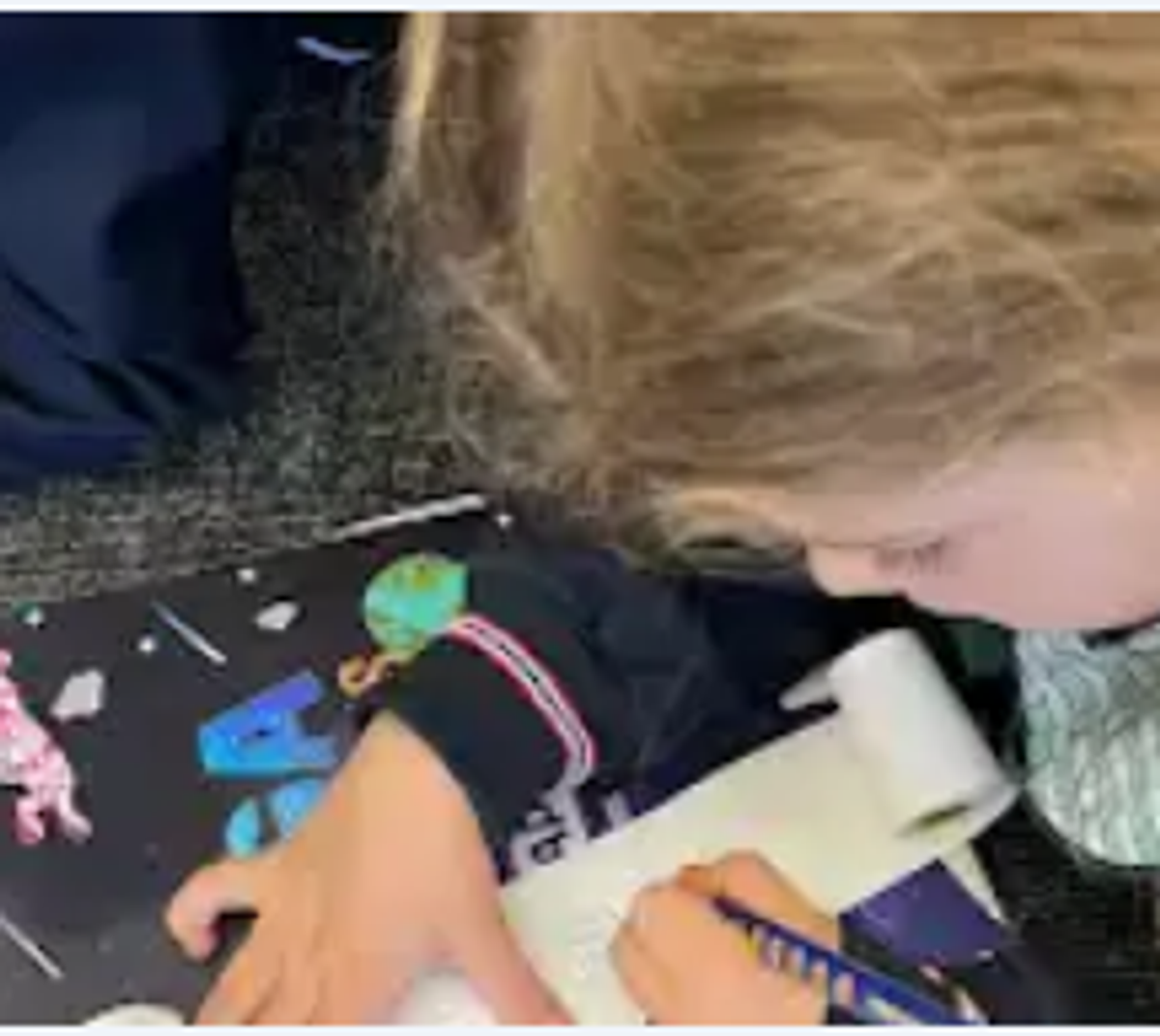




I read this blog post last week and thought it was worth sharing with you all. Dr Ange Rogers posted it and it really resonates with me, as we all know how uncomfortable it can be doing something for the first time. Out of our comfort zone, into the unknown and sometimes not successful. How much easier though is it when we do it again? We know what is ahead and what is expected and we have some idea on how we will manage it. I hope you enjoy it.
Colleen Monaghan
by Dr Ange Rodgers
Mar 06, 2025


One of my favourite sayings to share with my students (and my children) is: "Don't worry, it will be easier the second time". Pretty much everything in life has the highest level of difficulty the first time you try!
Whether it is cooking a new dinner, riding a bike, exercising or learning a new mathematics concept- everything gets easier the more you do it!
Many children (and adults) try something for the first time, fail, or don't perform as well as their self-image would have hoped, then immediately file the skill in the 'I'm not good at that' category. They then walk away and silently vow to never try it again.
This mindset obstructs our learning.
One of my favourite pieces of research is the Instructional Hierarchy developed in research by Haring, Lovitt, Eaton and Hansen in 1978.
Their classroom research observed that when students learn a skill they move through several phases or stages in their learning.
If we are learning something completely new, we are a novice who is starting from 'ground zero'.
You brain has never come across these ideas, concepts or movement patterns before. It needs to forge new ground. I imagine my brain to be clearing the way for a new road. It is hard and laborious work.
In the instructional Hierarchy this is known as the Acquistion phase of learning. Brown, Roediger & McDaniel, 2014 call this the Encoding stage. Basically it is where we are getting the knowledge or skills into our heads.
For me, this is the most uncomfortable stage of learning. Everyone want to give up at this point. It is hard and makes you question yourself.
BUT... if we work through this stage, we become more and more accurate in our enacting of the skill and eventually reach a point where we are 100% accurate. How long this takes depends on the skill to be learnt and the student learning the skill. But with enough repetitions our brain will build the structure it requires.
Learning is hard. But we need to normalise the uncomfortable feelings that accompany the initial phases so as to encourage students to 'push through'. When students understand that this feeling is just 'what happens' when we learn. They don't start to create stories in their head like: "I am no good at maths, nobody else is feeling like this". In fact, everyone feels like this when they are in the aquisition phase of learning. Not everyone feels it to the same extent for every skill, because some people already have schema in place that allow their brain to make connections and take a 'short cut' in the learning process.
But every brain goes through this learning process.
Prompts like: "It's ok, this is hard because it is new for your brain" or "Get a good night's sleep tonight, because your brain will file the learning, and it will be easier tomorrow", help students to understand why they are experiencing the uncomfortable feelings.
In this Aquisition phase of learning I also reiterate the process and any highlight any progress.
I say things like: "Oh wow, I can see your brain has really made some pathways since yesterday" or "your brain is doing this so much more easily today"!
This helps students to see that even though the progress may be slow they are moving forward in their learning.
I also ensure I am constantly reminding students of their potential future-state by saying things like: "If you practice this every day this week, I think you will be able do it by Friday" and "Imagine how you will feel when this is easy for your brain".
While our praise and encouragement is critical to help students in the Aquisition phase, the ultimate reward comes from within their own brain!
If they persist and succeed, the dopamine rush their brain will send them after overcoming the challenge will be spectacular and will help them the next time they encounter a challenge in their learning.
So this week I encourage you to normalise the uncomfortable feelings associated with learning for your children (and for yourself). Help them to see that their brain is an amazing organ that is literally wired to learn- if we allow it to do so!
Congratulations St Fidelis!!!
St Fidelis Students Shine at the Catholic Education Week Creative Arts Exhibition
This year’s theme for Catholic Education Week, 'Arise, shine; for your light has come, and the glory of the Lord has risen upon you' (Is 60: 1), draws inspiration from the Holy Year, the Year of Jubilee, and the Australian Catholic Youth Festival’s theme, 'Pilgrims of Hope.' I encouraged our 2024 Year 5/6 students to explore, design, and create artworks that reflected this theme.
Archbishop Peter Comensoli expressed a desire for a greater selection of religious artworks for the 2025 exhibition, and I am thrilled to say our students have produced stunning pieces that beautifully capture the essence of 'Arise, shine; for your light has come, and the glory of the Lord has risen upon you.'
Each school was allowed to submit only five pieces of artwork, and I am proud to announce that two of our students’ artworks were selected for the 2024 Creative Arts Exhibition—a fantastic achievement!
Our Year 5/6 students also received the Zart Art Sculpture and 3D Art Award and a $400 Zart Art Voucher for their collaborative sculpture, The Resurrection, where students worked in pairs to design and mold a sculpture of the resurrection of Jesus Christ. All their sculptures have been selected for the 2025 exhibition, which is a wonderful recognition of their hard work and creativity.
At this major event, our school captains, Estelle Kelly and Alexander Henson, proudly represented St Fidelis as they accepted the award. The exhibition was attended by students from primary and secondary schools, families, principals, and MACS leaders, all of whom were treated to the beautiful artworks on display.
It was a proud moment for all of us to receive such a prestigious award. With over 400 artworks submitted, it was truly amazing to witness our students’ work being recognized in this way.
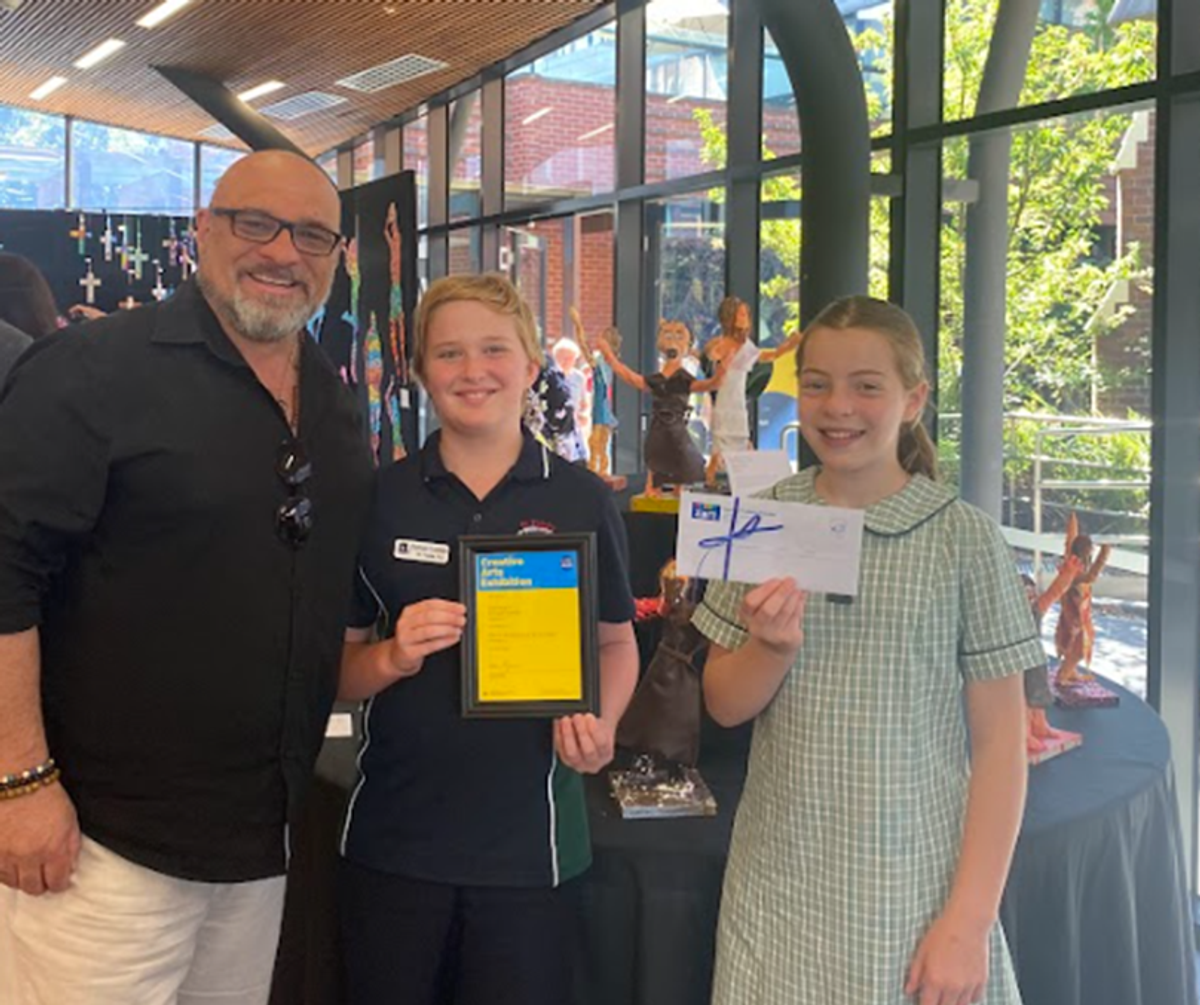
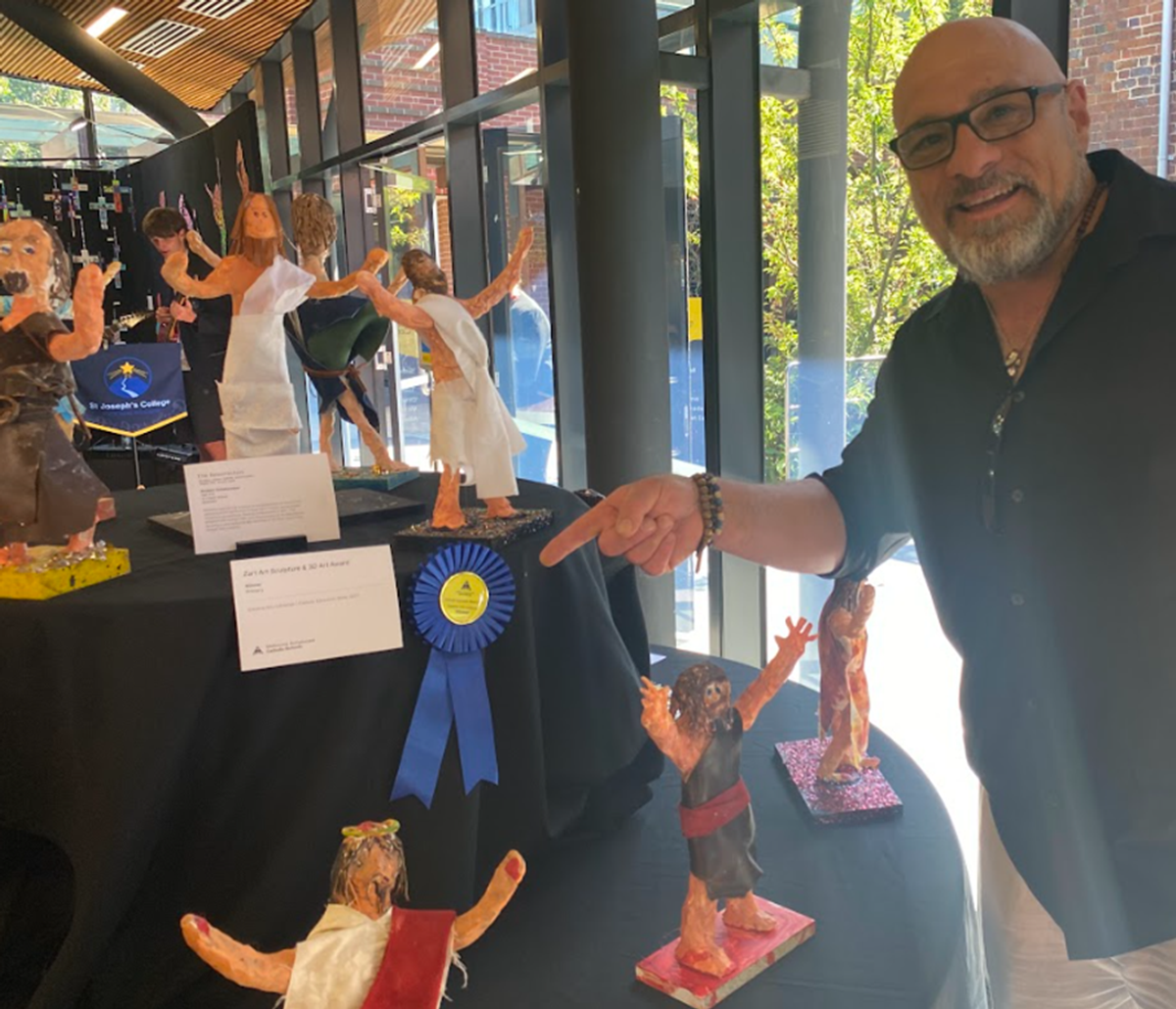






Joe Frazzetto
Visual Arts Specialist
BUONGIORNO!
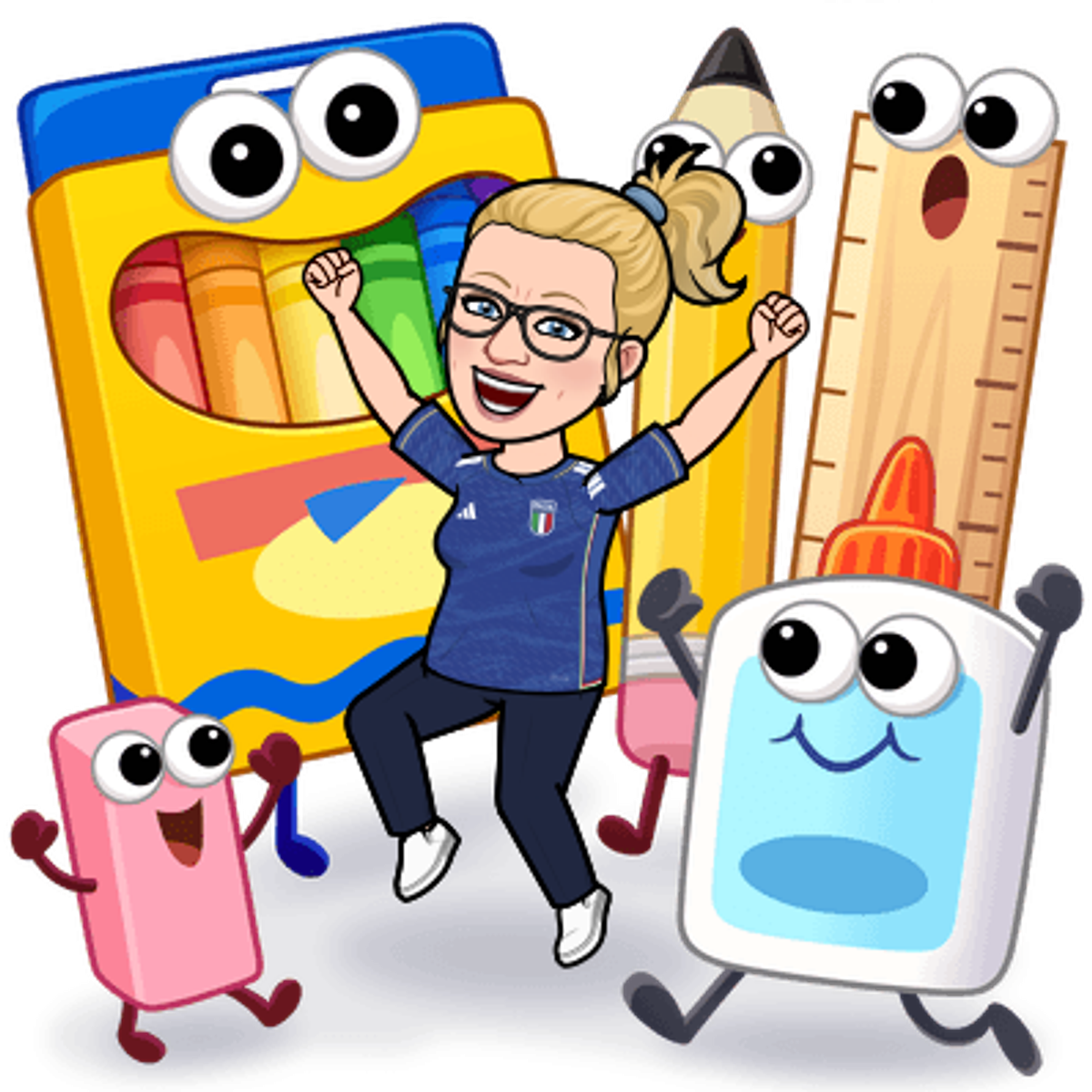

Salve a tutti! (Hello everyone),
I hope everyone had a great week, especially last Sunday, when our school had their community fete…che bellissima giornata! (What a lovely day it was). ☀️
I'd like to take this opportunity to write an update on what the bambini (children), have been learning in italiano this term. There has been a great deal of speaking, listening, singing and playing, using the language that has been taught throughout the term.
Foundation:
The Foundation bambini have settled very well into the Italian class and have learnt how to greet each other by saying ciao and buongiorno and beginning to introduce themselves, as well as learning that some of their names can change in Italian. They compared the Italian flag and map outline with the Australian flag and map outline, through this they were also introduced to some colours, (more on this next term). They were also introduced to numbers 0-10, through songs, a poem, flashcards and simple games. Overall, the main thing throughout this term has been that they all seem to be engaged in the activities and are having fun through their Italian learning. Bravi bambini! 😀
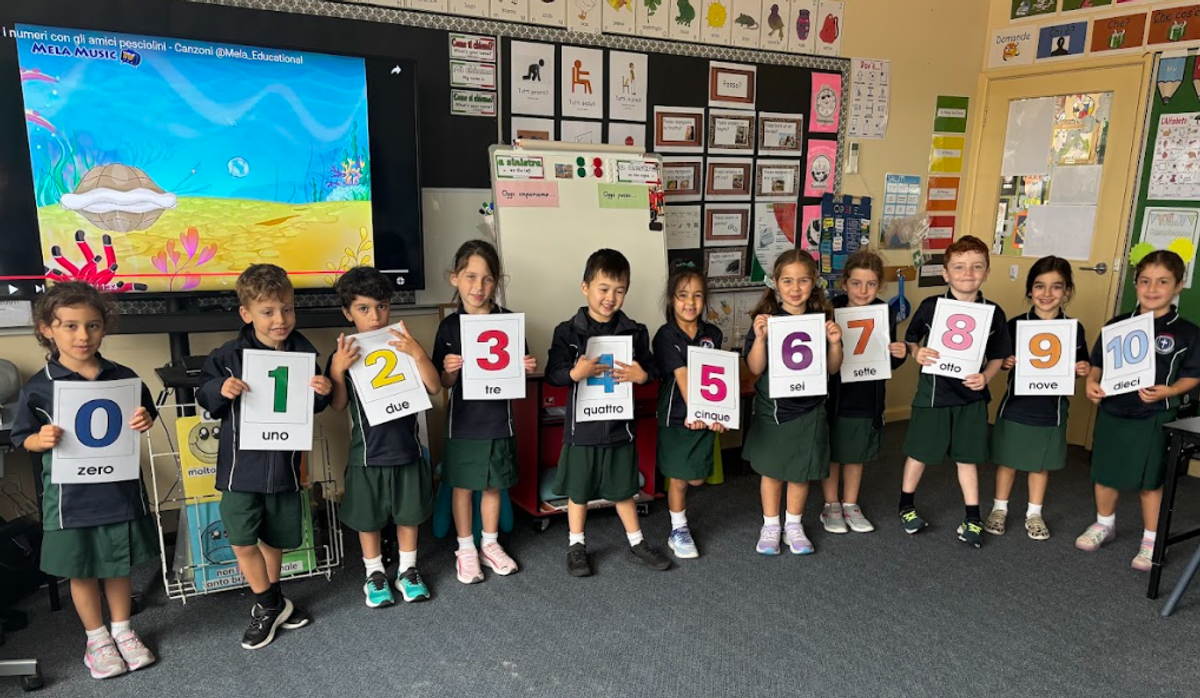
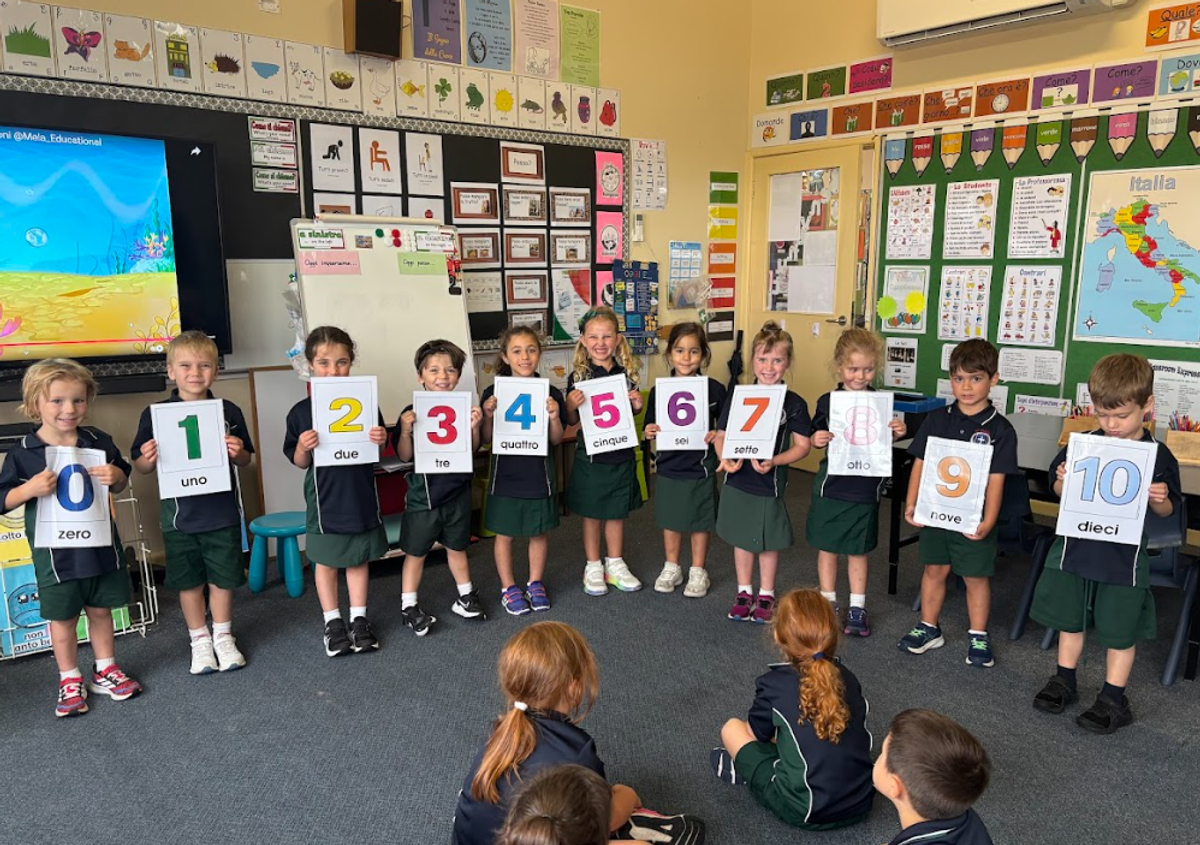

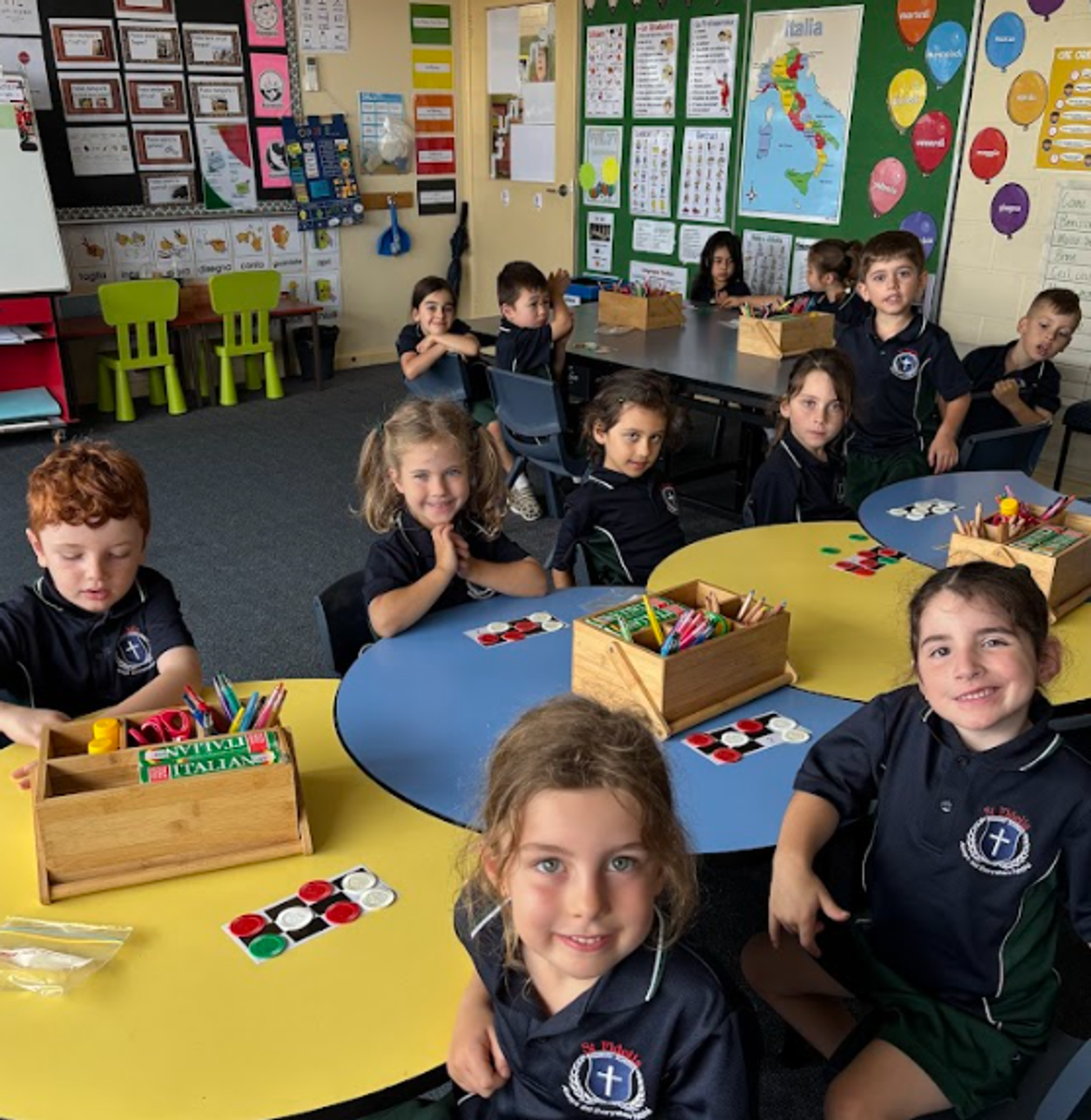




Grade 1/2:
The grade 1/2 bambini began this term with revising various everyday greetings, such as ciao, buongiorno, buonasera, buonanotte, arrivederci and a presto and using the greetings in language games. They have also learnt more about the Italian alphabet: including the number of letters, the sounds that each letter makes as well as focusing on the importance of the 5 vowels, with most Italian words ending with one of the vowel letters. The bambini have also continued learning how to count, now from 11-21, (21 being the maximum number of letters in the Italian alphabet). Bravissimi bambini! 😃
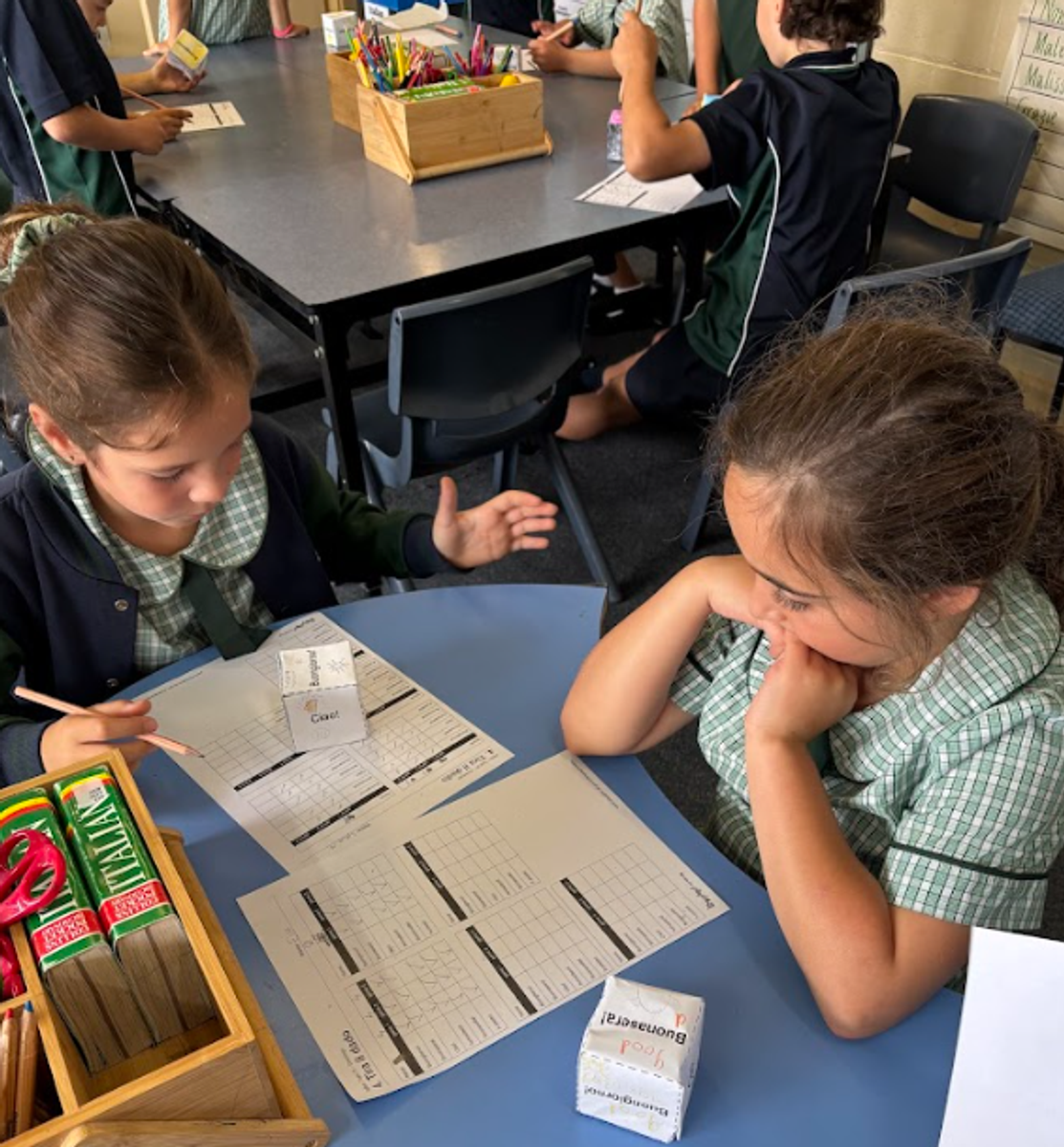
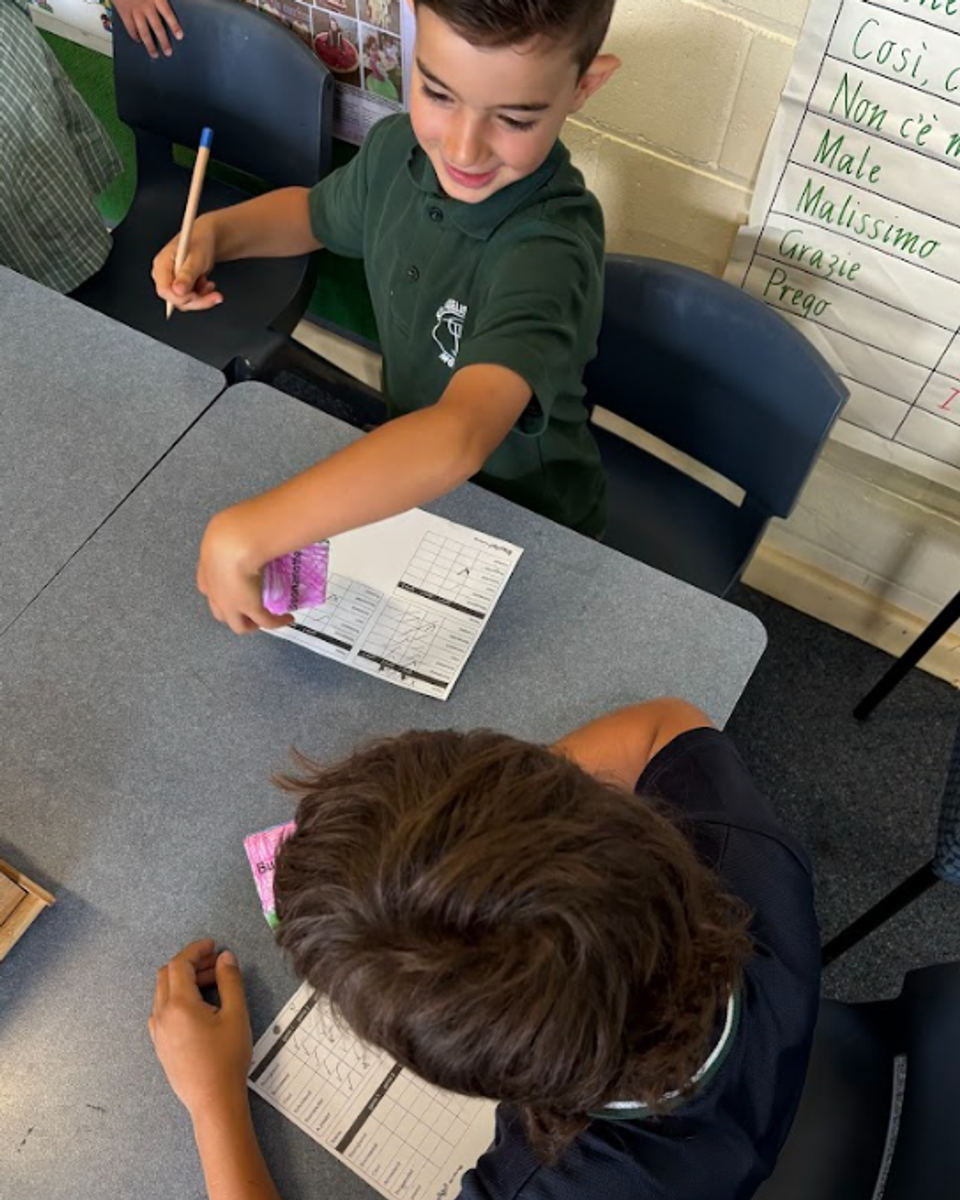
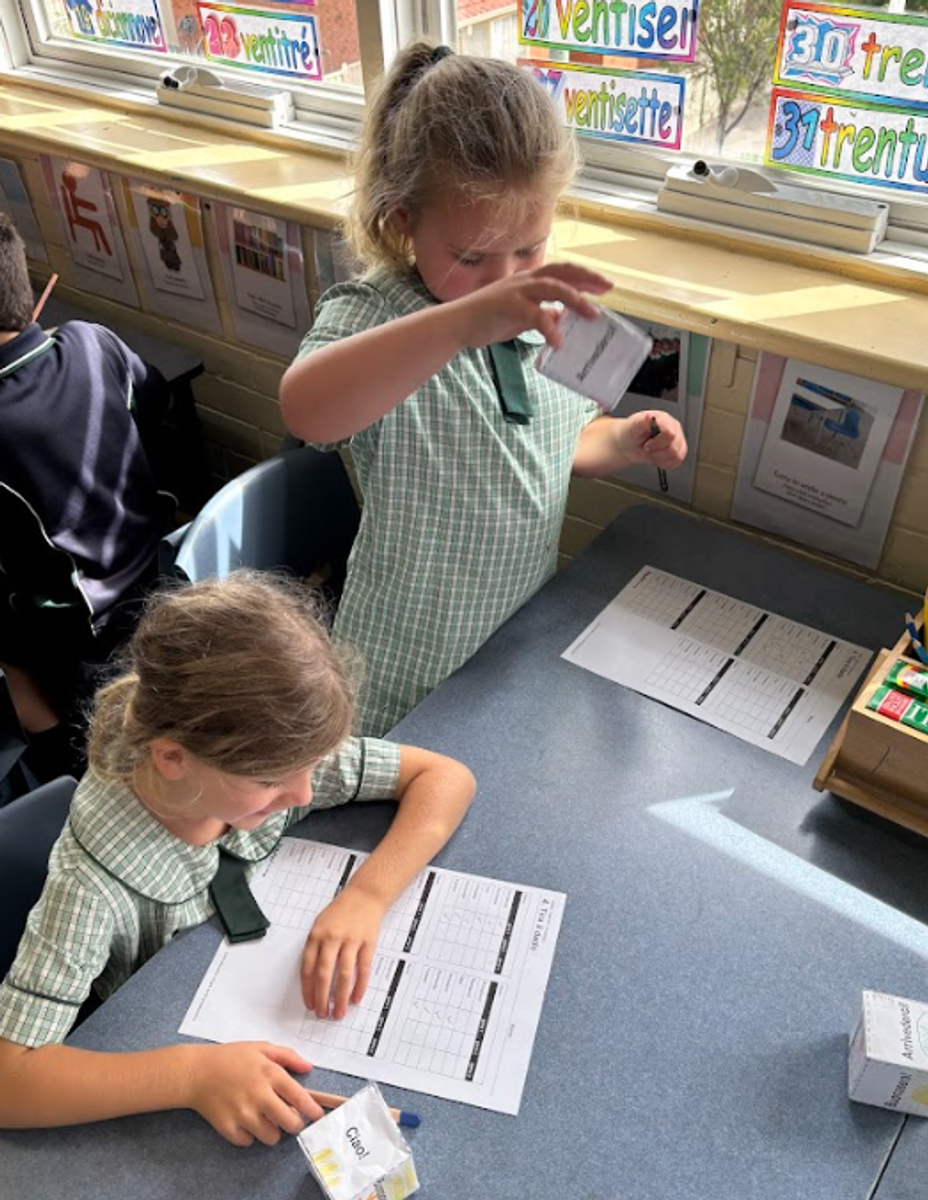
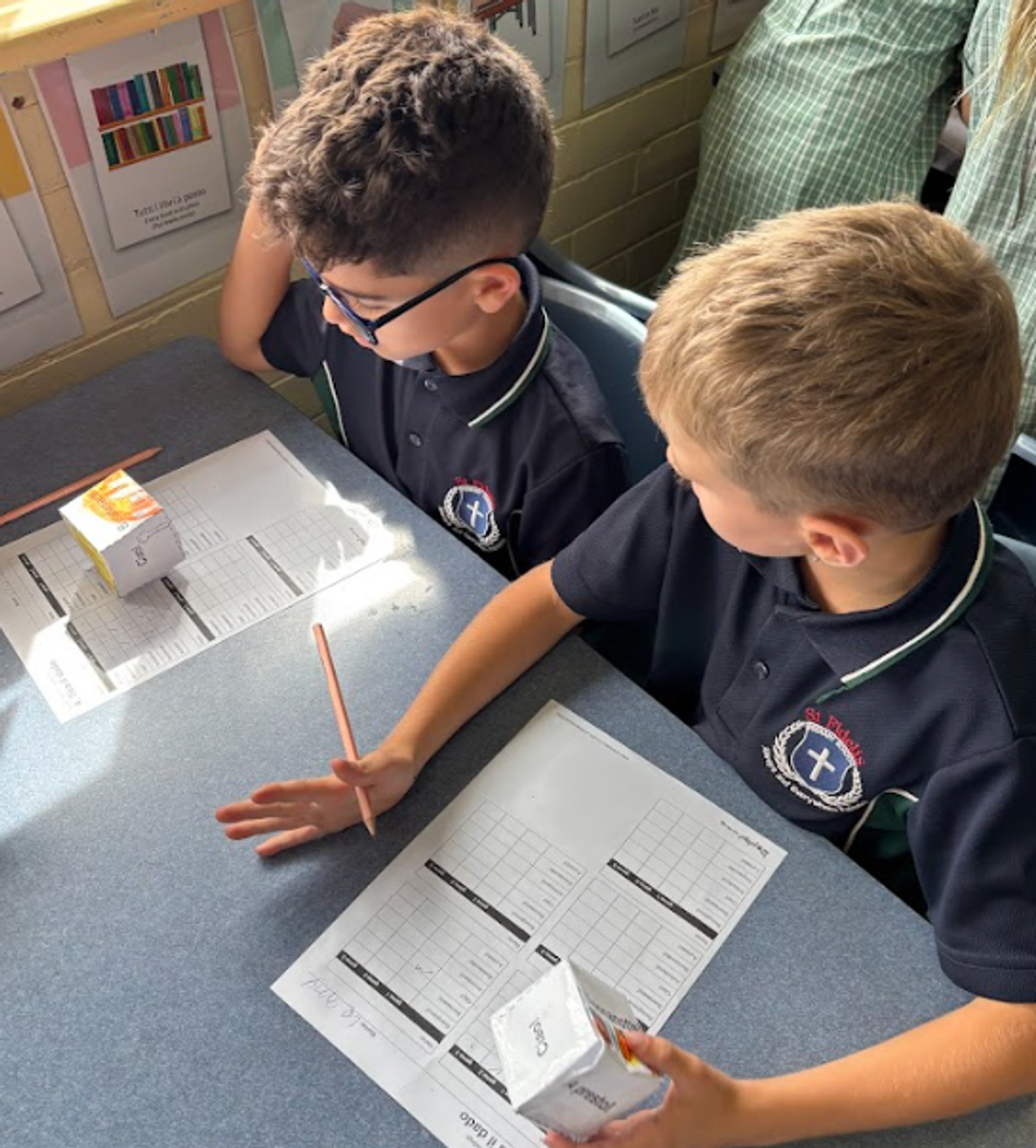
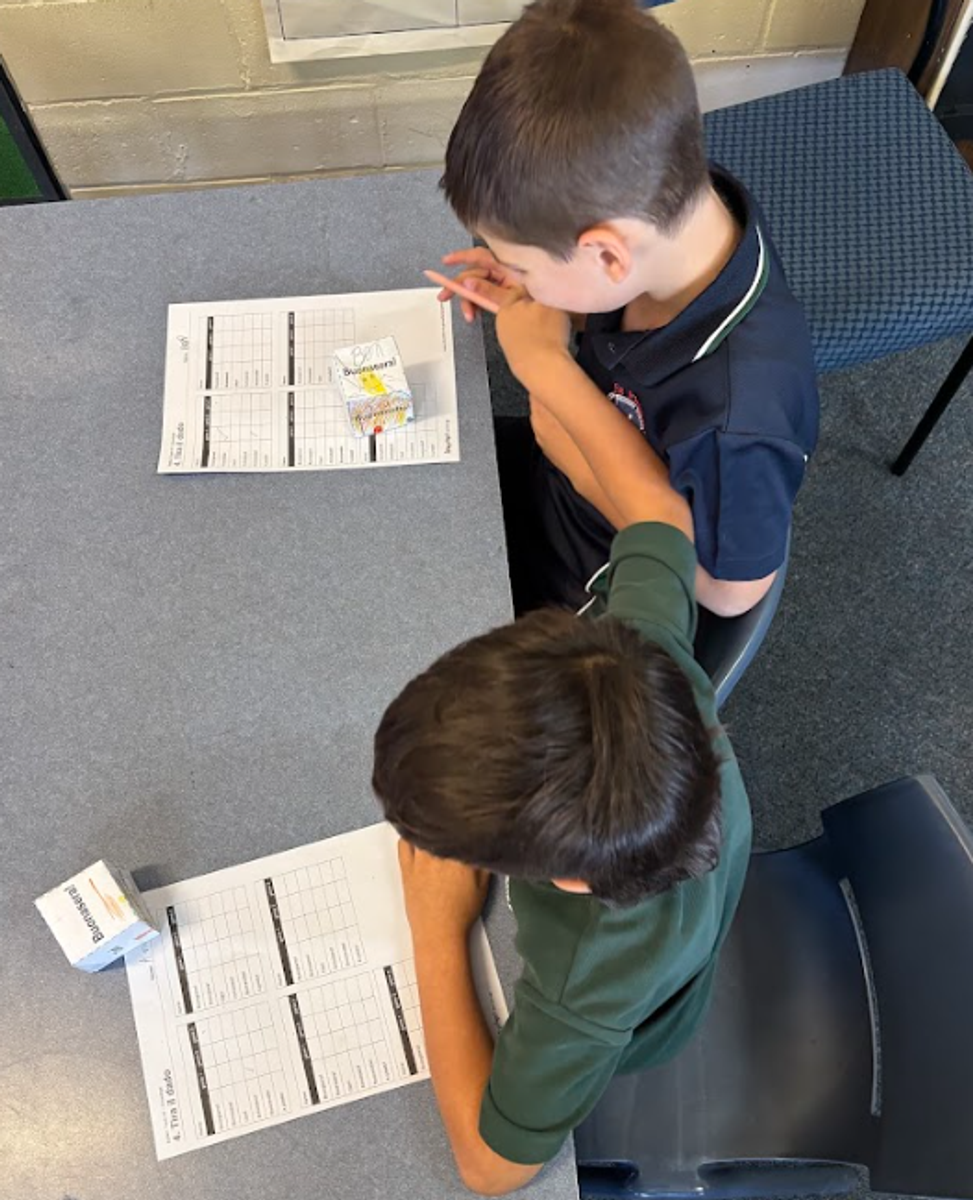
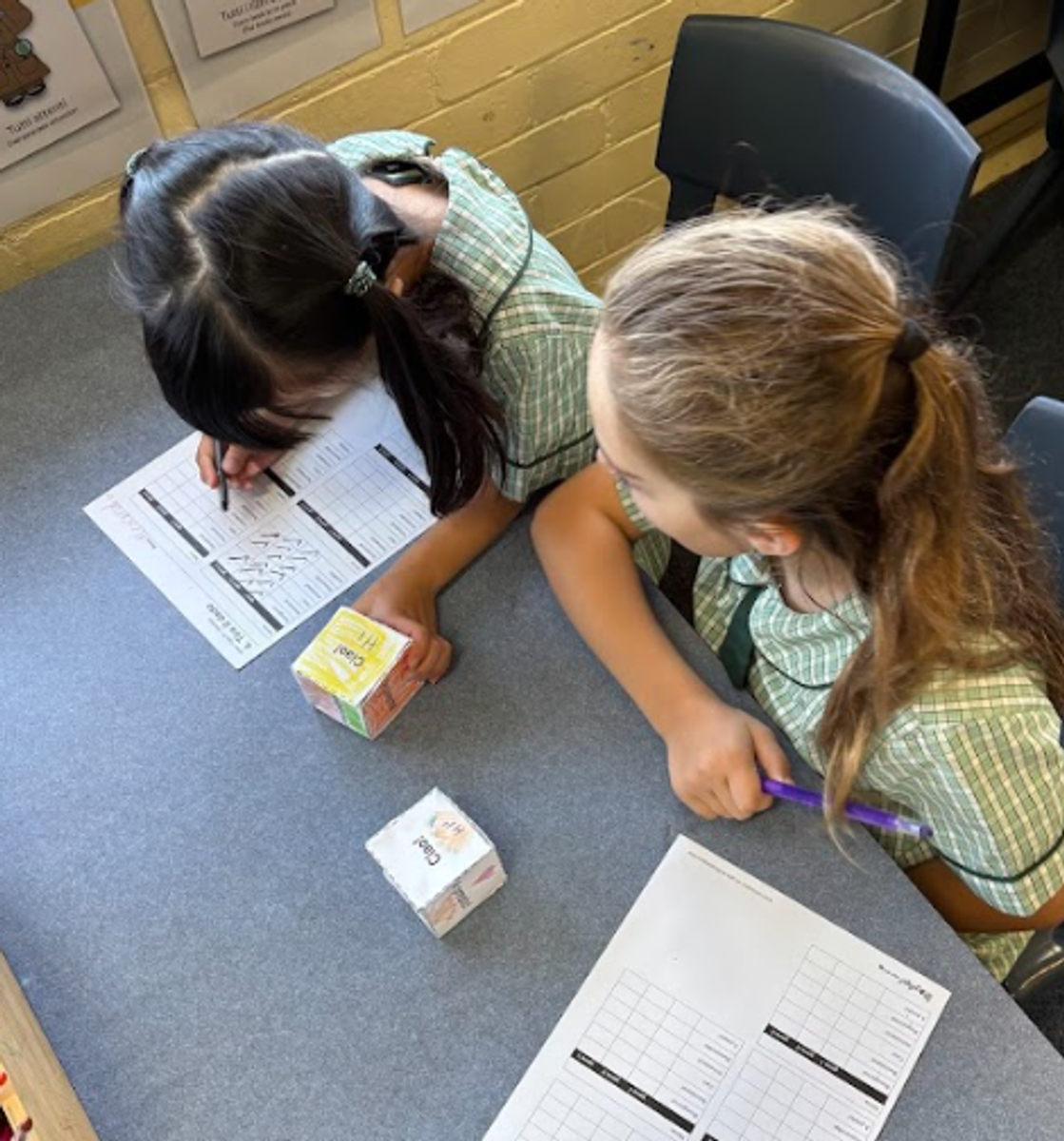






Grade 3/4:
The grade 3/4 bambini also began this term with revising everyday greetings and using them in appropriate settings. They then went on to do a unit on describing themselves, focusing on their physical appearance, revising, body parts and colours, as well as learning about noun/adjective agreement and that in Italian the adjective comes after the noun and that adjective endings need to match the gender of the noun, with some exceptions! The bambini not only described themselves orally but they also wrote a description, using the whole language writing process, ie. wrote their draft, edited their draft, then wrote their final description, which is now displayed in the Italian classroom on the wall. Fantastico lavoro bambini! 👏

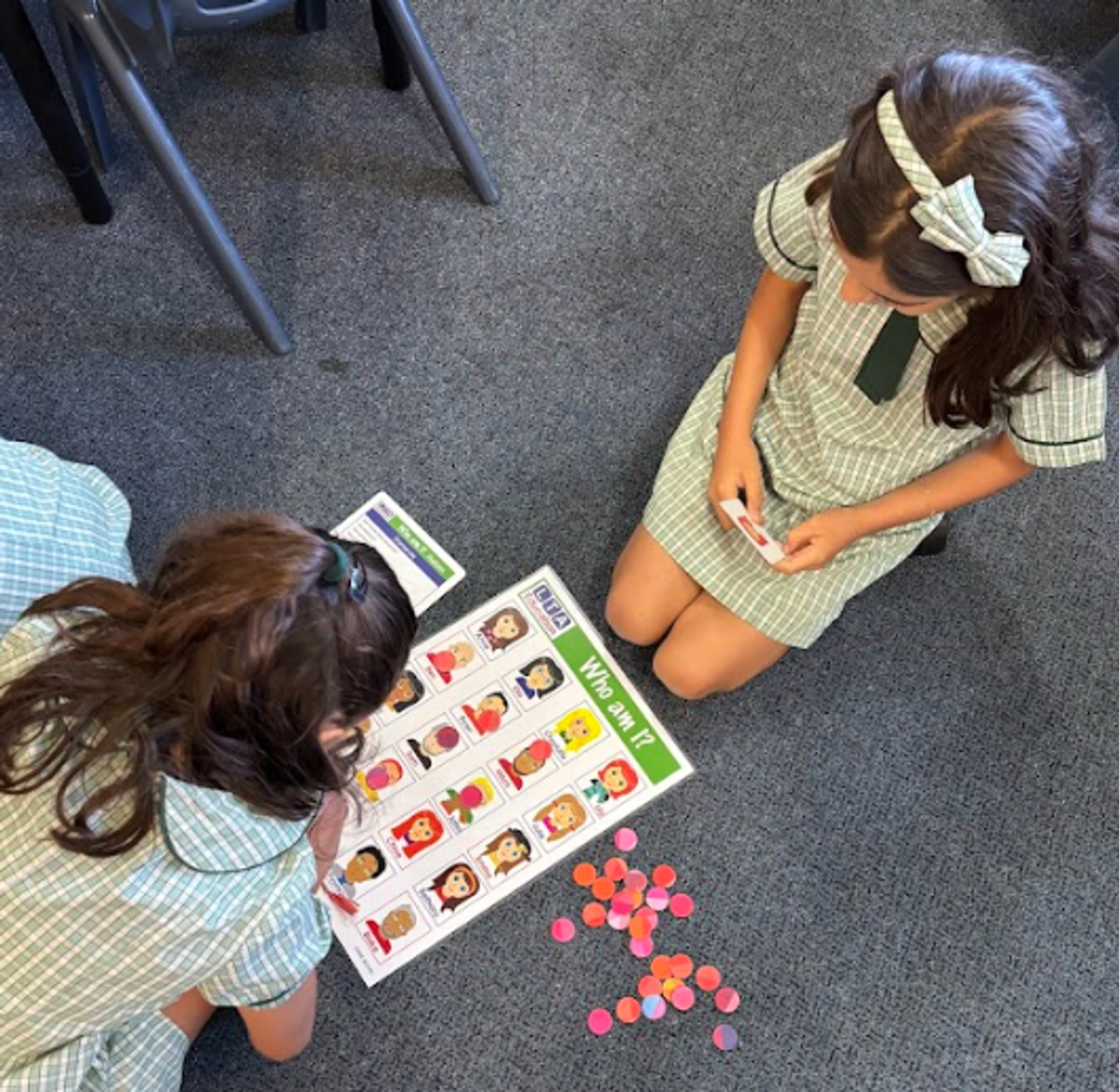

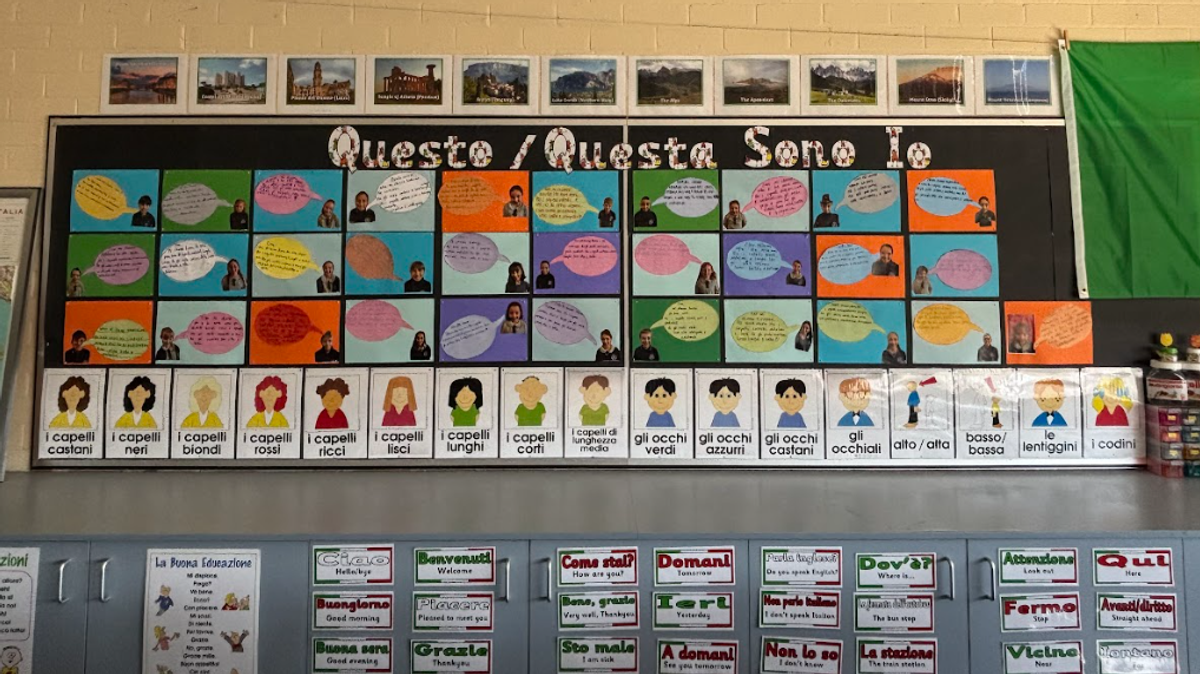




Grade 5/6:
The grade 5/6 ragazzi, started the term learning about various question starters, (le domande), for example, Chi? Come? Dove? Quando? Posso? Quanto? etc. to name a few. They then went on to make posters using the question starters in appropriate contexts. Their posters are now up on the wall in the SLA area. Maybe you may have seen them? They then went on to study a cultural unit on Carnevale, learning about what this festival is about, when it takes place and for how long it lasts, as well as learning about Commedia dell’arte and how the characters have influenced some of the costumes that people wear during Carnevale. This is quite a fun and colourful celebration which I believe the children have enjoyed learning about. Bravissimi ragazzi! 😎
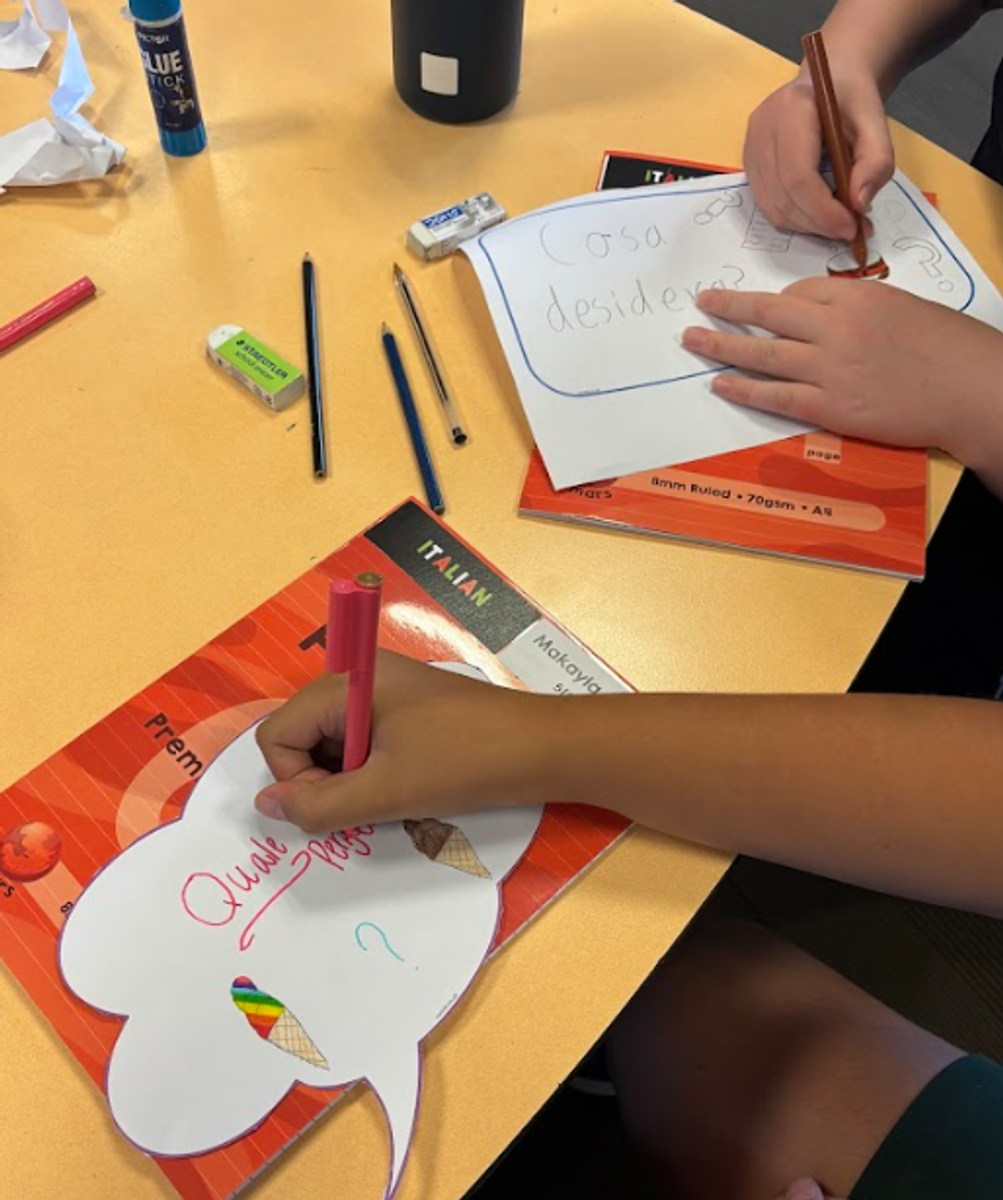
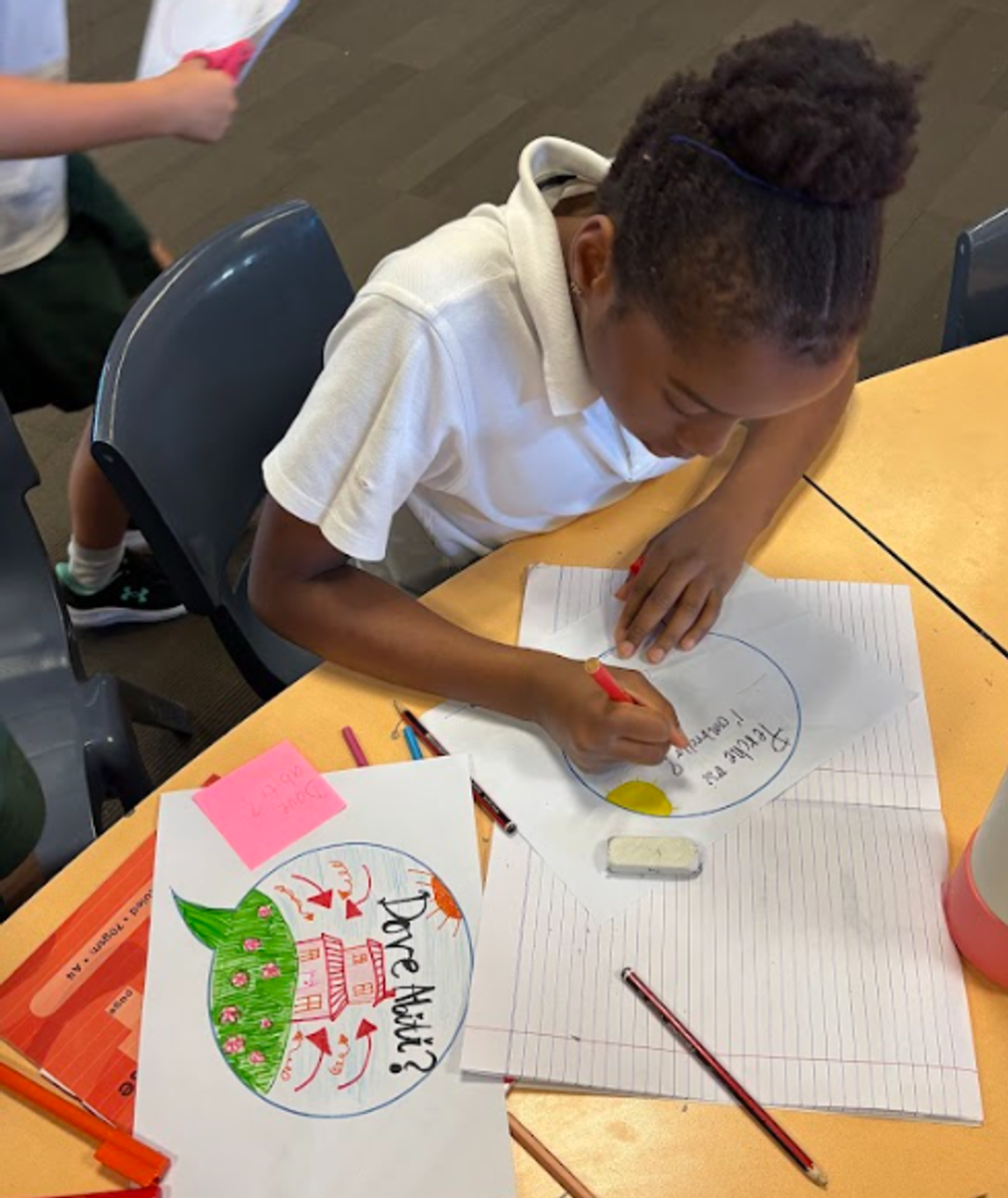
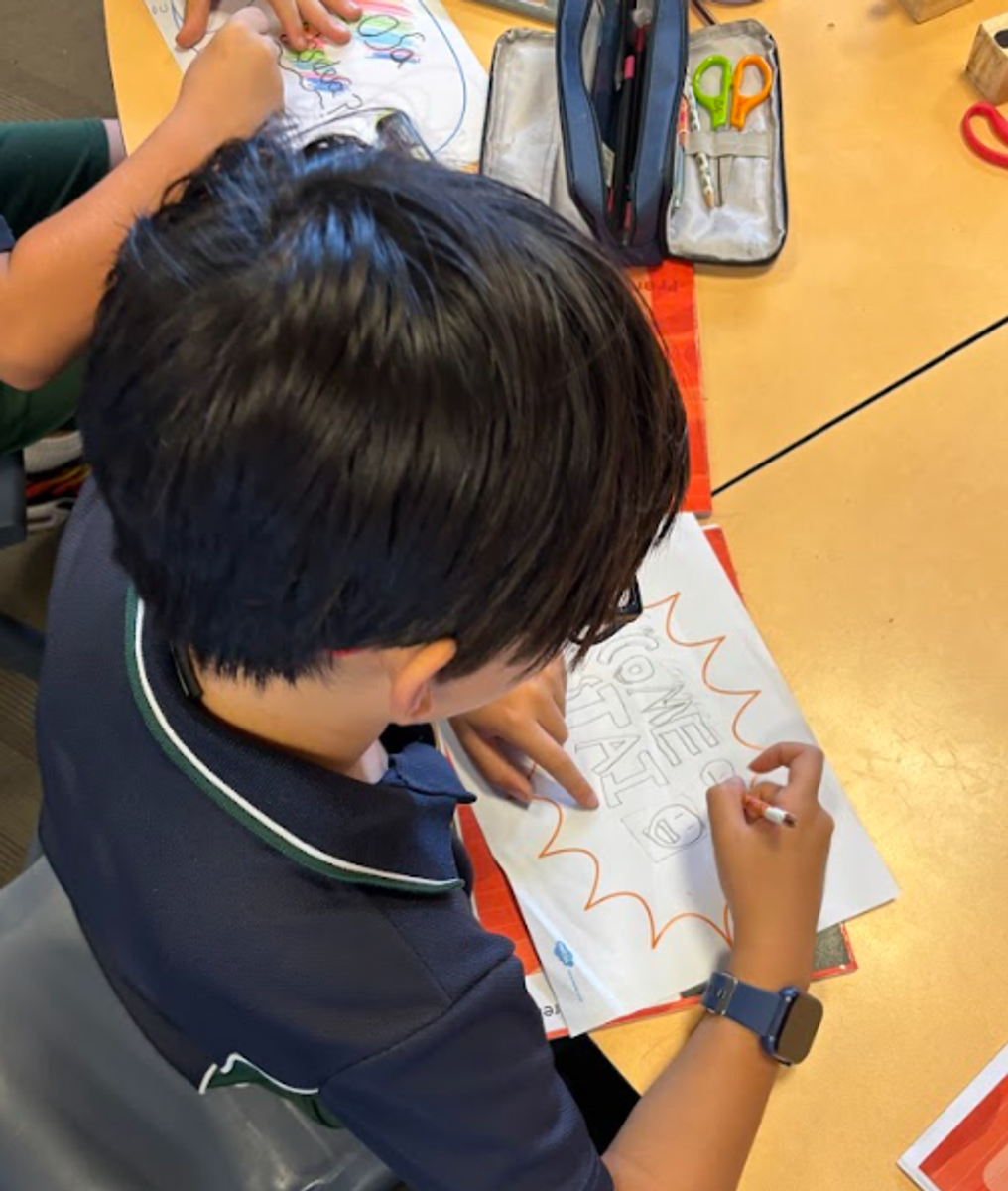
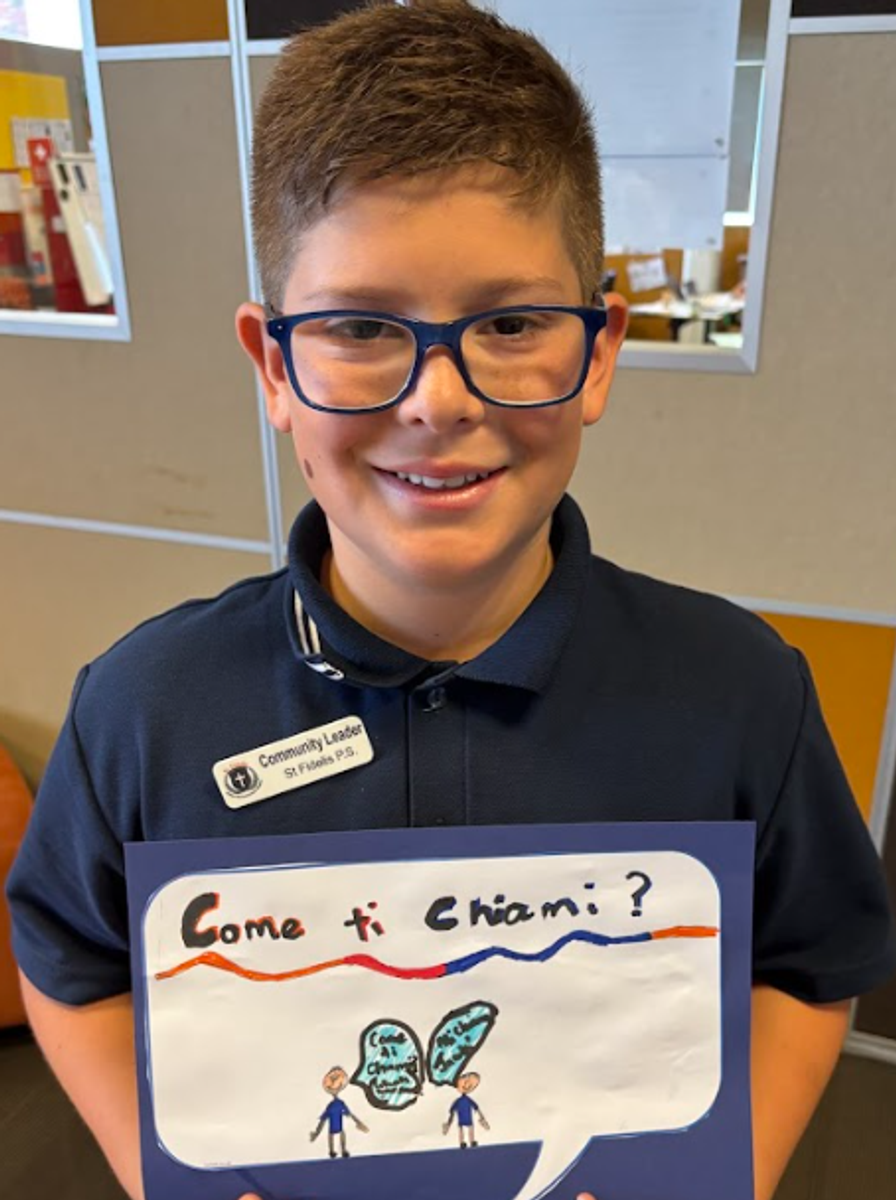




GRADE 3/4 REQUEST…
I will have completed the above units with most of the classes this week, (if not done so already with some) and then I will be doing some work on Pasqua (Easter), which brings me to the part where I’d like to ask if there are any grade 3/4 nonni (grandparents), in our St Fidelis school community that could come to our school il prossimo giovedì 3 aprile (next Thursday, 3rd April), either between 9-10am (3/4BP) or 10-11am (3/4SH) and give a short 5-10 min talk about how they celebrated Pasqua in Italia when they were young?
Perhaps your nonni could talk about what they would eat? play? religious activities, etc. Maybe even bring in some photos of Pasqua family celebrations? If your nonno (grandfather) or nonna (grandmother) are able to come, could you please contact me by email and let me know as soon as possible. Both myself and the bambini would greatly appreciate it. My email address is rfokianos@sfmoreland.catholic.edu.au Mille grazie. 🐣


St.FIDELIS PRIMARY SCHOOL COMMUNITY FETE:
As mentioned at the beginning of this article, the school fete on Sunday was a lovely event with many smiling and happy faces coming together to enjoy some sunshine, fun activities, friends company, talking to other parents, as well as an opportunity to do some grocery shopping too, like I did! 🍓🍉 It was also nice to catch up with past students and talk to them about how they are now going in High School and how their Italian studies are also going? I even had some lovely singers from grades 1-3 performing the Benvenuti (welcome) song. You all did an amazing job bambini, Bravissimi!
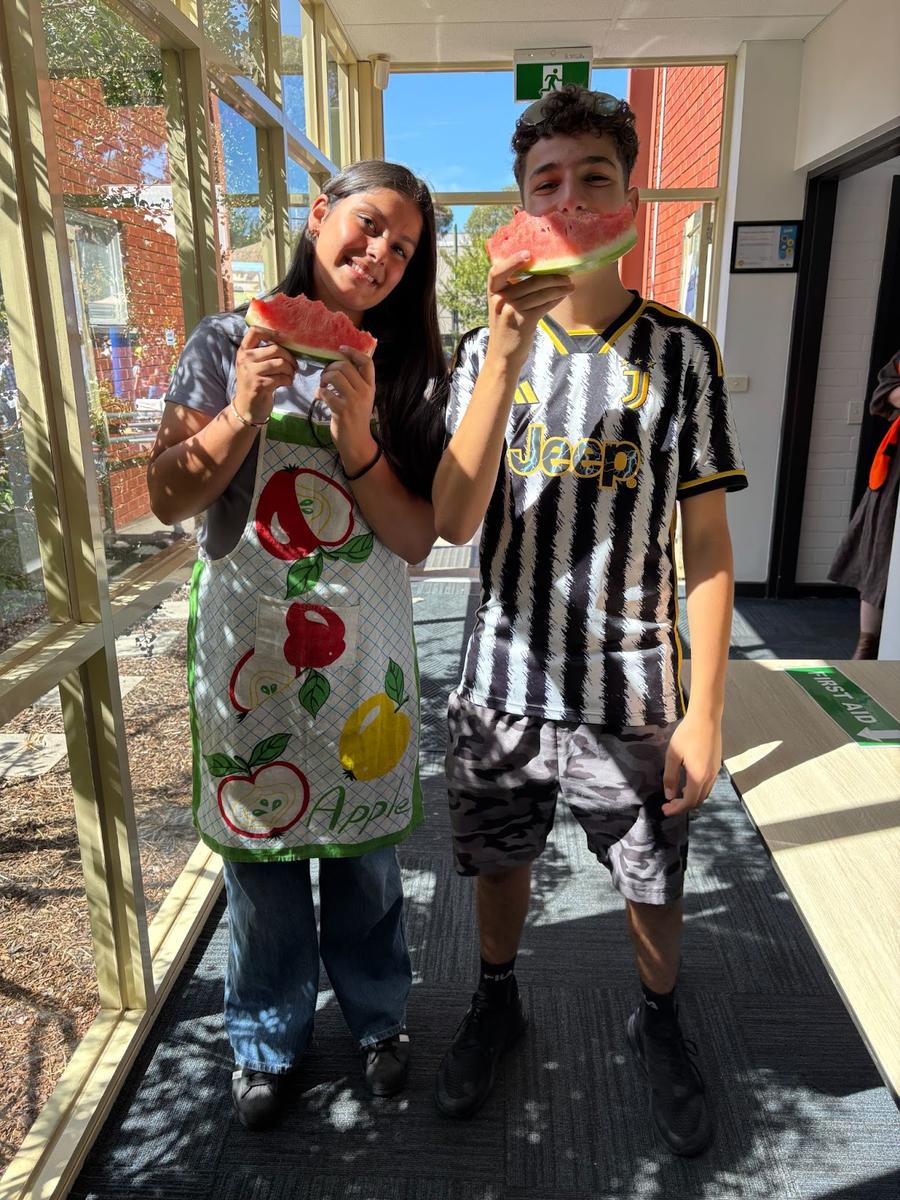



COMMUNITY ANNOUNCEMENT:


If you and your family love ricotta and various other cheeses, as well as other Italian food and entertainment, then the ricotta festival will be the perfect place for you to visit this coming weekend. Details below:
DATA (date): domenica 30 marzo - Sunday 30th March
ORARIO (time): 10:00 - 16:00 (10am - 4pm)
LUOGO (location): That’s Amore Cheese, 66 Latitude Boulevard, Thomastown
General admission tickets: $20 (Children under 12 for free)
RICOTTA FESTIVAL UPDATE: Due to the later release of this week’s newsletter, I have just found out that the tickets have all sold out! Which is disappointing, unless you are one of the lucky ones to have bought a ticket already! 😀


I’d like to wish all the St Fidelis school community, AUGURI PER UNA BUONA PASQUA E BUONE VACANZE! (Best wishes for a Happy Easter and happy holidays).
Alla prossima…
Signora Rosa 🌹